2023 ECONOMIC SURVEY
SWINGING SUCCESS
Golf Classic raises funds for Foundation (p. 11)
HEALTH DISPARITIES & SDoH
How pharmacists can play an essential role in identifying social needs and positively impacting health outcomes. (p. 18)

MSHP FOCUS
Impact of pharmacist-led drug management for a multidisciplinary interstitial lung disease program. (p. 22)
2023 July/Aug./Sept. | Vol. 61, Issue 3 MichiganPharmacists.org
MICHIGAN
THE OFFICIAL JOURNAL OF THE MICHIGAN PHARMACISTS ASSOCIATION



2 MichiganPharmacists.org 3 President’s Platform MPA President Hope Broxterman details how pharmacists can bridge gaps in health care. IN THIS ISSUE 14 26 4 CEO Corner MPA CEO Mark Glasper discusses plan to introduce Special Interest Groups (SIGs). 8 Student Focus Noreen Mika details the experience of the MPA Annual Convention & Exposition from a student's perspective. 33 MHU Feature Wayne State provides an overview of its Mobile Health Unit to help combat chronic hypertension. 36 Association Spotlight An overview of the Genesee County Pharmacists Association. 38 Agency Update PSI Insurance Agency celebrates 30 years of serving the pharmacy community. CEO: Mark Glasper; EDITOR: Ryan Weiss; PUBLISHER: Bryan A. Freeman Michigan Pharmacist (ISSN 1081-6089) is the official journal of the Michigan Pharmacists Association, published four times a year at 408 Kalamazoo Plaza, Lansing, MI 48933. Publication Number: USPS-345-600. Phone: (517) 484-1466, Fax: (517) 484-4893 Website: MichiganPharmacists.org E-mail: MPA@MichiganPharmacists.org Advertising Information: Visit MichiganPharmacists.org/news-publications/advertising-opportunities or contact Bryan Freeman, MPA marketing and communications director, at (517) 377-0257 or BryanFreeman@MichiganPharmacists.org All opinions expressed in Michigan Pharmacist are not necessarily official positions or policies of the Association. Publication of an advertisement does not represent an endorsement. Michigan Pharmacist is subject to the standards established by the Association. Michigan Pharmacist is distributed as a regular membership service, paid for through allocation of membership dues. © Michigan Pharmacists Association, 2023 ON THE COVER LEGISLATIVE UPDATE MEMBERSHIP 10
PROGRESS IS STILL PROGRESS
BY HOPE
Do you ever wonder what the future will bring? Does this ignite anxiety, or hope and possibility? For several years we have been alerted to a shortage of physicians, currently and beyond. Perhaps we did not expect a shortage of nurses, pharmacy technicians and other vital members of health care that has been exacerbated over the past three years. Recently it was reported that one-third of nurses are likely to leave their profession for early retirement or another career due to insufficient staffing, stress that was intensified by the pandemic and burnout. These shortages will unfortunately only intensify as baby boomers continue to age and their need for health care grows. This will cause more strain on an already strained field.
While this may sound ominous, here is a silver lining to consider: pharmacy is in the perfect position to bridge this gap. We can provide needed services by obtaining provider status and regulating pharmacy benefit managers (PBM). Practicing at the top of our license to meet unmet needs is easily in our wheelhouse!
Patients living in medically underserved communities often struggle to access needed care. It is estimated patients visit their community pharmacy three times more frequently than their primary care physician and specialist(s). Recently, the Pharmacy and Medically Underserved Areas Enhancement Act bill was introduced in Congress. If passed, it will allow pharmacists to provide Medicare Part B services such as medication management; management of chronic conditions and related medications; point-ofcare-testing; immunizations; tobacco cessation; and transition of care services. While this bill will not allow pharmacists to provide care for every patient, it moves our profession in a positive direction to obtain provider status.
In order to ensure those who live in rural and underserved communities have access to their trusted pharmacists, community pharmacies need to be able to operate at the height of their capabilities and keep their doors open by being appropriately paid by PBMs. PBM practices such as inappropriate dispensing fees, spread pricing, clawback fees and patient steering negatively impact a pharmacy’s ability to provide much needed patient care – especially in underserved populations.
Fortunately, the U.S. Senate Health, Education, Labor and Pensions (HELP) Committee was encouraged by the American Pharmacists Association (APhA) and other pharmacy partners to ensure PBM legislation protects states’ authority to have meaningful oversight of PBMs while not inhibiting current existing state laws. In addition, a bipartisan group of U.S. House lawmakers
have introduced legislation to safeguard patients and pharmacies from PBM practices that curb access to affordable and high-quality health care. The proposed “Protecting Patients Against PBM Abuses Act” prohibits patient steering and spread pricing; bars PBMs from compensating a network pharmacy less than affiliated pharmacies; and allows greater transparency on data related to PBM rebates. While these acts and other bills have not been implemented yet, we are getting closer. We are making progress!
There is a lot of work yet to be accomplished to obtain provider status and regulate PBMs. In order to ensure we continue making progress, I encourage you to join MPA’s Pharmacy Advocacy Response Team (PART) and send your legislators letters when PART reaches out asking for your help. Also, do not be afraid to meet with your legislators to provide education. Recently I met with a group of other pharmacy professionals virtually to educate our legislator on PBM reform. While it sounded intimidating at first, it was reassuring to know that we were sharing information on how not only to improve the practice of pharmacy, but also showed how it would benefit their constituents with the proper care they deserve.
Satya said it best, “A little progress every day adds up to big results.”
REFERENCES:
Harvey, Frank. “Pharmacists Are Essential to Rural Access to Healthcare.” MedCity News, 21 March 2023, medcitynews. com/2023/03/pharmacists-are-essential-to-rural-access-tohealthcare/. Accessed 21 May 2023.
Diaz, Jaclyn. “Nearly a third of nurses nationwide say they are likely to leave the profession.” NPR, 2 May 2023, www.npr. org/2023/05/02/1173107527/nursing-staffing-crisis. Accessed 21 May 2023.
AACN. “Fact Sheet: Nursing Shortage.” AACN Nursing, Oct 2022, www. aacnnursing.org/Portals/0/PDFs/Fact-Sheets/Nursing-ShortageFactsheet.pdf. Accessed 21 May 2023.
APhA. “Pharmacist groups applaud introduction of bill expanding Medicare patients’ access to pharmacist services.” APhA, 10 May 2023, https://www.pharmacist.com/APhA-Press-Releases/pharmacistgroups-applaud-introduction-of-bill-expanding-medicare-patientsaccess-to-pharmacist-services. Accessed 21 May 2023.
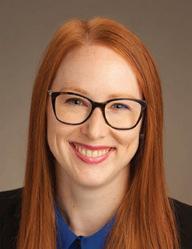
United States, Congress, Senate. Pharmacy Benefit Manager Reform Act of 2023. Congress.gov, https://www.congress.gov/bill/118thcongress/senate-bill/1339/text. 118th Congress, Senate Bill 1339, Introduced 27 April 2023.
United States, Congress, House. Protecting Patients Against PBM Abuses Act of 2023. Congress.gov, https://www.congress.gov/ bill/118th-congress/house-bill/2880?s=1&r=5. 118th Congress, House Resolution 2880, Introduced 26 April 2023.
2023 July/Aug./Sept. | Vol. 61, Issue 3 3 — PRESIDENT’S PLATFORM —
BROXTERMAN, Pharm.D.; president, Michigan Pharmacists Association
"There is a lot of work yet to be accomplished to obtain provider status and regulate PBMs.
In order to ensure we continue making progress, I encourage you to join MPA’s Pharmacy Advocacy Response Team (PART) and send your legislators letters when PART reaches out asking for your help."
SIGs 2.0: MORE VALUE FOR YOUR MEMBERSHIP INVESTMENT
BY MARK GLASPER, chief executive officer, Michigan Pharmacists Association
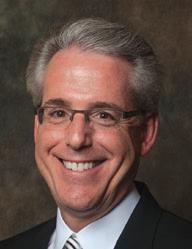
We do a great job of engaging members across all practice settings, but SIGs can help focus these interests even more. Take independent pharmacists as an example. They fit nicely under the Michigan Society of Community Pharmacists (MSCP) umbrella. But do they ever get to meet virtually or in person to discuss common concerns?
The Consultant and Specialty Pharmacists of Michigan (CSPM) landscape is ripe for SIG opportunities. From compounding and nuclear to long-term care and specialty, CSPM members could benefit greatly by networking with friends and colleagues in these highly specialized practice settings.
SIGs 2.0
So, just what are we referring to when we talk about forming SIGs?
They’re certainly not the old SIG on a listserv, or a discussion board where you needed to keep a topic alive or it dies. They’re also not just another e-newsletter delivered to your inbox. This is an opportunity to network with your peers in a topical area of interest. You can meet in person or remotely, whatever the group wants to do. Maybe you want to meet in person at ACE, or have a summer gathering in a state park. Maybe you only meet virtually, but it’s important to the group to meet every month. That’s the beauty of these new SIGs. You can make them what you want them to be.
SIGs also can be about more than practice settings. They can be groups representing residents or educators. If interacting only with preceptors is of interest, then there could be a SIG for you. Interested in diversity, equity and inclusion (DEI) efforts? Join the namesake SIG. These SIGs can transcend section boundaries and be transformational for MPA and you!
Do SIGs Work?
One doesn’t need to look any further than our national pharmacy association partners. The American Pharmacists Association has no less than 14 SIGs and describes them as “member-driven groups focused on key areas of interest … each SIG has its own identity where SIG members discuss hot topic issues, share resources and provide advice and support to each other as they grow their professional networks.”
The American Society of Health-System Pharmacists maintains 12 sections and forums (SIGs) and considers them “niche membership communities where colleagues who share the same practice-specific interests can share their issues, challenges and ideas.”
States have joined the bandwagon as well, with the California Pharmacists Association leading the way with eight SIGs. “Participation in SIGs allows you direct access to colleagues who share and understand your practice-setting interests. Each SIG serves as a source of specialized information … and provides opportunities for involvement in advancing the interests of your profession.”

4 MichiganPharmacists.org
— CEO CORNER —
MPA has always been at the forefront of representing member interests through its unique structure of practice sections and component organizations, which include local associations and regional societies. Now, we’d like to take a step further and find out if there are special interest groups – or SIGs as they are referred to – that MPA could offer that would bring even more value to your membership investment.
Taking SIGs to the Next Level
I’ve discussed developing SIGs with all of our section boards – MSCP, the Michigan Society of Health-System Pharmacists (MSHP), the Michigan Society of Pharmacy Technicians (MSPT) and CSPM – and they all agreed with the concept. My colleagues at the National Alliance of State Pharmacy Associations (NASPA) also agree where they have been able to implement SIGs.
We disseminated a survey in July where participants were able to select SIGs of interest, including suggesting others we may not have considered. We are tallying the results and will let membership know the outcome. The hope is we will implement the most popular SIGs beginning in 2024.

Thank you, in advance, for letting us know your favorite SIGs!

COMMENCEMENT AWARDS


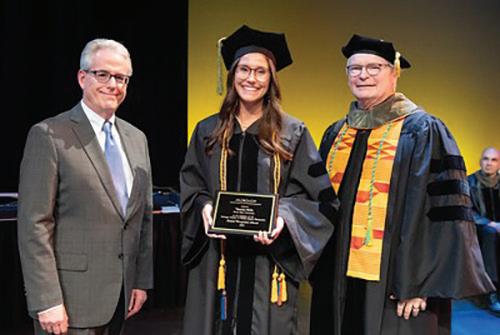

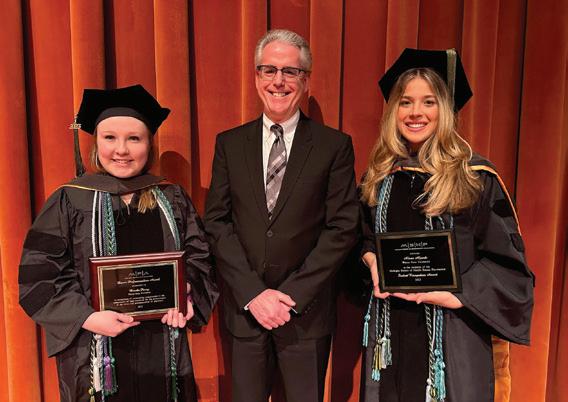

— CEO CORNER —
Wayne State University student Brooke Penny, left, was the recipient of the MPA Dean’s Professionalism Award. Alisar Aljundi, right, was the winner of the MSHP Student Recognition Award.
Ferris State University student Ashlyn Schasel receives the MPA Dean’s Professionalism Award at the school’s commencement ceremony. She is pictured with MPA CEO Mark Glasper, left, and Ferris State College of Pharmacy Dean Stephen Durst.
Ferris State University student Veronica Mills receives the MSHP Student Recognition Award at the school’s commencement ceremony. She is pictured with MPA CEO Mark Glasper, left, and Ferris State College of Pharmacy Dean Stephen Durst.
The University of Michigan’s Julianne Fava, second from left, and Anna Burley, second from right, were the winners with the MPA Dean’s Professionalism Award and the MSHP Student Recognition Award, respectively. Also pictured are MPA CEO Mark Glasper and College of Pharmacy Dean Vicki Ellingrod.
“SIGs also can be about more than practice settings. They can be groups representing residents or educators. If interacting only with preceptors is of interest, then there could be a SIG for you.”
2023 July/Aug./Sept. | Vol. 61, Issue 3 5
EVENTS CALENDAR

MPA, local association and national pharmacy organization events, as well as health observances, are included below. For the most
information, please visit our online calendar at MichiganPharmacists.org/eventscalendar
AUGUST 2023
SEPTEMBER 2023
Please note: Some board and
meetings may be subject to a change in format to virtual or in-person at the discretion of the members. Please check the

6 MichiganPharmacists.org
— EVENTS CALENDAR —
up-to-date
committee
MPA website or contact MPA@MichiganPharmacists.org for more information.
1-31 Tuesday, Aug. 1 –Monday, Aug. 31 National Immunization Awareness Month Nationwide 11 Friday, Aug. 11 MSPT Board of Directors Meeting Virtual 24 Thursday, Aug. 24 MPF Board of Trustees Meeting Virtual 31 Thursday, Aug. 31 CSPM Board of Directors Meeting Virtual 1-30 Friday, Sept. 1 –Saturday, Sept. 30 Healthy Aging Month Nationwide 4 Monday, Sept. 4 Labor Day Nationwide 7 Thursday, Sept. 7 MSHP Board of Directors Meeting and Retreat In-Person 13 Wednesday, Sept. 13 MPA Executive Board Meeting In-Person 14 Thursday, Sept. 14 Pharmacy Day at the Capitol In-Person 26 Tuesday, Sept. 26 MSCP Committee & Board Meeting Virtual 28 Thursday, Sept. 28 MSHP Board of Directors Meeting Virtual Save the date! Upper Peninsula Division Fall Conference — Oct. 7-8 Registration to open in August Northern Center at NMU
SAT., AUG. 12, 10-11:30 a.m.
Pharmacy Tech Immunization Administration Home Study
NOTE: Home study materials must be completed before live session date.
lecturepanda.com/v2/announcement/ag1zfnJ4Y2V0cmFja2VychMLEgZDRVVzZXIYgICAsLaLigoM/ag1zfnJ4Y2V0cmFja2VycicLEgZDRVVzZXIYgICAsLaLigoMCxIHTGVjdHVyZRiAgND_lOOpCww
THURSDAY, AUG. 17, Noon-4:30 p.m.
3rd Annual Outpatient Antimicrobial Stewardship Innovations Symposium (OASIS) – MSHP
The third annual Outpatient Antimicrobial Stewardship Innovations Symposium (OASIS), sponsored by the Michigan Society of Health-System Pharmacists (MSHP) and Ferris State University College of Pharmacy, will be a 3.5-hour educational meeting, with both in-person and virtual options for attendees. lecturepanda.com/a/2023OASIS
FRIDAY, AUG. 25, 10 a.m.-Noon
Implicit Bias Training 2.0: Education, Practice and Teams
Implicit Bias 2.0: Education, Practice and Teams is the second offering in our Michigan Pharmacists Association Implicit Bias Training series. If you have taken our original offering of Michigan Pharmacy Implicit Bias, this is a great session to build upon your knowledge and understanding of diversity, equity and inclusion. This is also a great session to start out on your DEI/Implicit Bias journey.
lecturepanda.com/a/ImplicitBias20EducationPracticeandTeams-August
WEDNESDAY, SEPT. 20, 1-4:30 p.m.
Point-of-Care Test and Treat Program
The NASPA Pharmacy-based Point-of-Care Test and Treat National Certificate Program provides an opportunity to gain the skills and information necessary to develop a testing program for diseases such as influenza, Group A Streptococcus, HIV, hepatitis C, coronaviruses and chronic diseases. NOTE: Home study materials must be completed before live session.
lecturepanda.com/v2/announcement/ag1zfnJ4Y2V0cmFja2VychMLEgZDRVVzZXIYgICAsLaLigoM/ag1zfnJ4Y2V0cmFja2VycicLEgZDRVVzZXIYgICAsLaLigoMCxIHTGVjdHVyZRiAgLD4_eLBCQw
SAT., OCT. 7 AND SUN., OCT. 8, 7:30 a.m.-5:30 p.m.
Upper Peninsula Division Fall Conference
The Upper Peninsula Division Fall Conference will take place Oct. 7-8 at the Northern Center on the campus of Northern Michigan University. Registration will open in August.
michiganpharmacists.org/event/upper-peninsula-division-fallconference/
TUESDAY, OCT. 24, 4-6 p.m.
Implicit Bias Training 2.0: Education, Practice and Teams
lecturepanda.com/a/ImplicitBias20EducationPractice andTeams-October
FRIDAY, OCT. 27, 7:30 a.m.-5:30 p.m.
MSHP Annual Meeting
Held each fall, the MSHP Annual Meeting offers up to six hours of live continuing education credit. Programming is geared toward health-system pharmacists, residents, pharmacy technicians and student pharmacists. The MSHP Annual Meeting focuses on clinical, leadership management and residency topics as well as other general areas of pharmacy practice.
lecturepanda.com/a/2023MSHPAnnualMeeting
MPA Implicit Bias Training Home Study
This is MPA's original offering of implicit bias training (IBT). Per new rules adopted March 23, 2023, IBT no longer requires a live component; this session meets all current licensing requirements.
lecturepanda.com/v2/announcement/ag1zfnJ4Y2V0cmFja2VychMLEgZDRVVzZXIYgICAsLaLigoM/ag1zfnJ4Y2V0cmFja2VycicLEgZDRVVzZXIYgICAsLaLigoMCxIHTGVjdHVyZRiAgND_lOOpCww
QUESTIONS
If you have any questions about any of these MPA education events, please email MPA@MichiganPharmacists.org
2023 July/Aug./Sept. | Vol. 61, Issue 3 7
Michigan Pharmacists Association (MPA) is accredited by the Accreditation Council for Pharmacy Education (ACPE) as a provider of continuing pharmacy education. — CE EVENTS —
ACE from a Student's Perspective
For many pharmacists, the Michigan Pharmacists Association's Annual Convention & Exposition (ACE) has been a valuable opportunity to network, gain knowledge and earn continuing education (CE) credit. However, what often gets overlooked is how this event also provides a platform for students to get involved in the profession and build their network.
BY NOREEN MIKA, Pharm.D. candidate 2024, University of Michigan

The 2023 ACE took place Feb. 24-26 at the Renaissance Center in Detroit. As a student at the University of Michigan's College of Pharmacy, I had the opportunity to witness my peers from the University of Michigan, Ferris State University and Wayne State University engage in the conference in numerous ways. ACE empowers students to get involved and have a voice in MPA in numerous ways, such as being paired with a mentoring pharmacist, serving on the House of Delegates, co-presenting CEs with a professor, competing in the National Alliance of State Pharmacy Associations (NAPSA) Self-Care competition and even serving on the executive board. Every attendee at ACE had a unique experience shaped by their involvement in various activities. Carleigh Robinson, a U-M P2 student pharmacist, said she had a positive experience, mentioning her participation in the Adopt-AStudent program, where she received mentorship from
Bill and Susan Adrian. Additionally, Robinson caught up with mutual connections.
Similarly, Jillian Merritt, a Ferris State P3 student pharmacist, participated in the Adopt-A-Student program and was mentored by Sarah Hill, MPA’s president-elect. During the awards banquet, Merritt was seated with Hill and other members of the MPA Executive Board, allowing her to socialize with pharmacists who have a passion for pharmacy.
Iris He had a nerve-wracking but exciting experience representing U-M in the NAPSA Self-Care competition. Despite the pressure of the event, she found the competition incredibly fun and enjoyed the overwhelming support of her classmates. Though her team did not win, she considered the overall experience unforgettable and was grateful for the opportunity.

8 MichiganPharmacists.org — STUDENT FOCUS —
“Through the diverse experiences of the attending students, it's clear that ACE provides a valuable opportunity for student pharmacists to enhance their leadership skills, expand their network and advocate for their profession.”
Speaking of nerve-wracking feelings, Jenny Shang recalled a similar feeling while presenting a CE to a room of pharmacists with U-M professor Dr. Sarah Vordenberg titled, "Stop Taking Your Medication! Approaches to Support Patient-Centered Deprescribing." Despite the feeling, Shang thoroughly enjoyed every aspect of the process, from preparing the presentation to delivering it on the day of the event. She was thrilled to provide a student's perspective and engage in a thoughtful discussion afterward.

Believe it or not, the student experience continues! Many students also had the opportunity to participate in the House of Delegates. Meiyan Kailainathan, a U-M P3 student pharmacist, mentioned how being a House of Delegates member was an enriching experience. He was joined by other students from Ferris State and Wayne State to participate in discussions about proposed resolutions that aim to strengthen the pharmacy profession.
Zaid Yousif, a former executive board member, and Mary Westover, a 2023 executive board student representative, highlighted their involvement.
"I've had the pleasure of expanding my network by meeting pharmacy professionals in Michigan and learning how we can advocate for our profession,” Yousif said. “Additionally, ACE has allowed me to strengthen my leadership skills."

Yousif partnered with the Michigan Pharmacy Foundation to host the first-ever student pharmacist social trivia game night. It was a great success and it is hoped more students will participate.
"Attending ACE gave me a glance at what MPA can provide for its members,” Westover said. “It was a great weekend of continuing education and networking with pharmacists and students from Wayne State and Ferris State. This is such a unique opportunity that makes me excited to join my local association after graduation."
Westover and Yousif are enthusiastic about recruiting more students to attend ACE in the future and join MPA.
Through the diverse experiences of the attending students, it's clear that ACE provides a valuable opportunity for student pharmacists to enhance their leadership skills, expand their network and advocate for their profession. With a range of activities available, there are numerous ways for students to get involved and make a difference. Attending ACE is an experience that can have a lasting impact on one's career and I highly encourage all pharmacy students to take advantage of this incredible opportunity.
For more information on how you can get involved with MPA as a student, contact MPA Student Pharmacist Executive Council staff liaison Farah Jalloul at FJalloul@ MichiganPharmacists.org
2023 July/Aug./Sept. | Vol. 61, Issue 3 9 — STUDENT FOCUS —
Students from Wayne State University, the University of Michigan and Ferris State University compete in the NAPSA Self-Care competition at ACE 2023.
MPA Chief Executive Officer Mark Glasper addresses students at ACE 2023.
FROM THE DESK OF MEMBERSHIP
Members are the backbone of the Michigan Pharmacists Association; without you, we simply would not exist. That is why MPA would like to recognize the new members who have joined since the last edition of the Michigan Pharmacist. We thank you for supporting MPA’s mission. Of course we would also like to thank those of you who have been with us for much longer. Whether you’re a new or veteran member, your participation in MPA means everything to us!
New MPA members
(April 1-June 30)
Michael Abouzaid
BY SCOTT
Eddie Abueida
Iman Ahmed
Katelin Anderson
James Awada
Jennifer Baldridge
Ayman Beydoun
Heather Bluhm
Amy Bower
Ashley Builta
Tammy Busch
Andrew Bush
Antoinette Coe
Brittany Compaualsh
Maher Daman
Kristin Demboski
Carmen Docter
Andrew Dodson
Susan Dopke
Shelby Kelsh
Associate Professor of Pharmacy Practice, Ferris State University

Terry Doxey
Donald Eichholz
Ali Elhasan
Victoria Espinoza
Rachel Eyler
Osama Fakih
Fayez Faraj
Julianne Fava
Lisa Feeney
Tate Feeney
Nathan French
Annette Frosch
Josephine Fuentes
Thomas Gajewski
Alex Gargano
Murali Ginjupalli
Angie Gladchuk
Joshua Goerge
Andrea Gordon
Ramanarasimha
Gujjulam
Eric Hartsfield
Kimberly Hedrich
Mary Heim
Robert Hough
Emily Jacobs
Manjula Jayabalan
Misako Johnson
Natasha Jolakoski
Raniah Kareem
Fatime Kassira
Heather Kauffman
Tiffany Keller
Hannah Khan
Marshall Koen
Elizabeth Kyle
Jaron Lakey
Susan Lanstra
Lauren Leedom
Fadia Lightfoot
Peter Matta
Patrick Meny
Marcella Metzger
Mark Moyers
Andrew Nelson
Rebecca Rudaski Nelson
Christopher Niendorf
Akram Obeid
Matthew O'Bryant
Allison Olmsted
Miriam Opara
Kristen Oss
Santoshkumar Pandya
Meghaben Patel
Sheila Payea
John Pazynski
Annamalai Perumal
Greg Polk
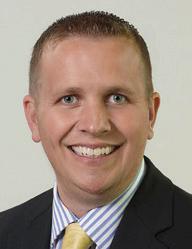
Jessica Prociv
Collin Proksch
Nahil Rahal
Elizabeth Rodriguez
Daniel Romary
Fadi Saad
Sharon Salah
Emad Saleh
Sammy Salem
Ashlyn Schasel
Liesel Schlorke
Margaret Schulte
Nora Shara
Shams Shibley
Caleb Skiba
Shelley Skinner
Robert Smith
Octavia Solomon
Kelli Sneed
Tyler Steffes
Susan Stratton
Alicia Thorne
Anthony Totoraitis
Jennifer Tryon
Lisa Weisenbach
Pamela Wong
Honore Yonti
Bassam Youssef
Lena Zoma
MEMBER SPOTLIGHT

Member Since: 2022
Describe Your Role/Day in the Life: I am a faculty member with an ambulatory care clinic site within the Corewell Health West Internal Medicine Residency Clinic. I host Advanced Pharmacy Practice Experience (APPE) rotations throughout the year. With my students’ help, I offer chronic disease management and transitions of care services to my patients. When not completing clinic duties, I am working on my class materials or research. I teach hypertension and sexually transmitted infections, along with a transitions of care elective. My research focuses on preventative care recently, including vaping cessation, diabetes management and anticoagulation.
Why You’re an MPA Member: MPA and MSHP are fantastic organizations for networking and learning about advocacy in our state and local communities.
Recent Accomplishments: I received a grant from Truth Initiative with colleagues to work towards making Ferris State University campus tobacco-free. Unrelated to pharmacy, I completed the 127th Boston Marathon in April.
How MPA Has Helped You Achieve Any Accomplishments: MSHP and MPA have helped me engage in advocacy in changing pharmacy practice to allow pharmacists to practice
10 MichiganPharmacists.org
— MEMBERSHIP —
WALSH, director of membership, Michigan Pharmacists Association
BY RICK DRABEK, executive director, Michigan Pharmacy Foundation




G LF CLASSIC
This year’s event was a great success and it wouldn’t have been possible without your support. For all who were sponsors, golfed and volunteered at the event, your support enabled the Foundation to have a wonderful event and provided funding for our mission: “To Foster the Future of Pharmacy.” For that, I am tremendously grateful. The Foundation’s mission is more than just a slogan to us; it's a commitment to make a difference in the lives of the individuals and communities who depend on the pharmacy profession.
Supporting the MPF Golf Classic is not just about playing a round of golf; it's about helping to shape the future of pharmacy. The funds we raise through this event are a vital source of support for student pharmacist scholarships, enabling us to provide leadership development training for pharmacy professionals and fund pharmacy-focused grant opportunities for underserved communities in Michigan. Your participation and support for the 2023 MPF Golf Classic allows us to make a real difference and helps us continue to fund Foundation initiatives.

Additionally, we were also able to celebrate MPF's 30th anniversary at the MPF Golf Classic and reflected on the milestones achieved and the countless lives touched through our programs. MPF looks forward to continuing this journey, and with your continued support, we are confident that we can uphold this great legacy, contributing to a strong and vibrant future for the pharmacy profession.
From the bottom of my heart, thank you for your generous participation and support. We eagerly look forward to your presence at next year’s 2024 MPF Golf Classic and at other MPF events so we can continue this journey together “To Foster the Future of Pharmacy.”

2023 July/Aug./Sept. | Vol. 61, Issue 3 11
I would like to extend my sincerest appreciation to all who supported the Michigan Pharmacy Foundation (MPF) Golf Classic that was held June 21 at Eldorado Golf Course in Mason.
— FROM THE FOUNDATION —
MPA President-Elect Sarah Hill practices on the driving range before the outing.
Thank You to Our Sponsors








GARY & MARIE KADLEC


CHRIS & MARY JO MAKSYM
ANNETTE & JEFFREY ROWE
SUSAN & CLAYTON ERICKSON
DENISE MARKSTROM & JOHN BRUBAKER


JAMES VANDER LINDE
MARGARET MALOVRH
RICK DRABEK
12 MichiganPharmacists.org
G LF CLASSIC 2 0 2 3
www.BehindYourDesign.com GRAPHIC DESIGN WEB DESIGN MARKETING PRINTING UNIQUE BRANDED MERCHANDISE FRIENDS OF THE FOUNDATION
MICHIGAN PHARMACIST ASSOCIATION
NORTHERN

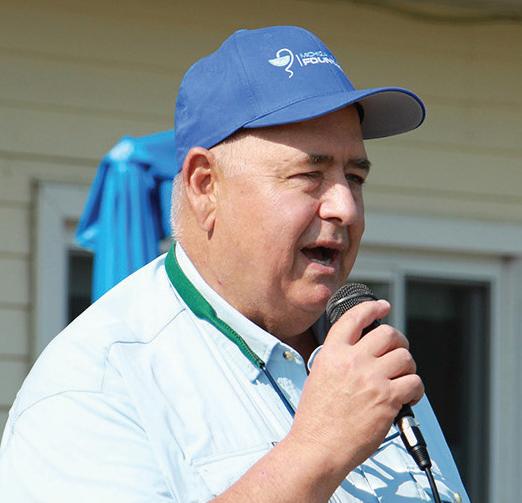

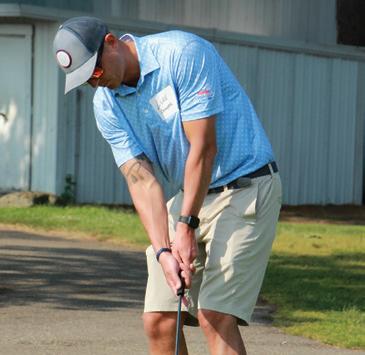




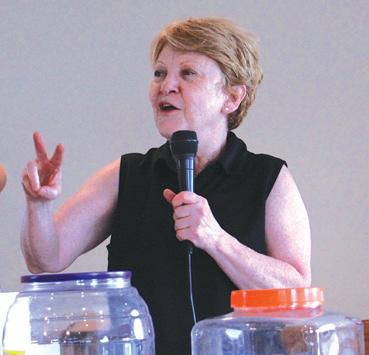
2023 July/Aug./Sept. | Vol. 61, Issue 3 13
The first-place team of Justin Maksym, Dennis Price, Chris Marsh and Benny Fellows, who led the 14-team field with a round of 52.
MPF Executive Director Rick Drabek kicks off the Golf Classic.
MPA Marketing and Communications Director Bryan Freeman, left, speaks to Eric Roath, MPA director of government affairs, before the two tee off at the MPF Golf Classic. Luke Gumper won the Putting Contest before the outing.
After the outing, an awards ceremony was held in the banquet center; some of the available prizes are pictured.
The second-place team of Andrew Young, Paul Schmansky, Everett Cronizer and Kirk Diamond, who shot a combined round of 55.
MPA CEO Mark Glasper delivers remarks at the awards ceremony.
MPA President Hope Broxterman watches her tee shot on No. 6.
MPF Vice Chair Peggy Malvorh addresses attendees during the awards ceremony.
UPDATES TO THE PHARMACIST CONTINUING EDUCATION RULES


Anew set of pharmacist continuing education (CE) rules has been approved by the Board of Pharmacy and became effective on June 26 of this year. As with many of the rulesets currently going through the Board and the Department of Licensing and Regulatory Affairs (LARA), a significant portion of the changes are aimed at updating language and providing clarity around original intention. However, there were also a handful of substantive changes.
Clarifications on CE Requirements, Including CE for Pharmacy Law/Ethics
BY ERIC ROATH, Pharm.D., MBA, MPA director of government affairs

This, as mentioned in LARA’s broadcasted email, is purely a clarification of policies that were already in effect. Related to the law requirement, the language clarifies that one hour (out of the 30 total required) must be in “pharmacy ethics and pharmacy law,” implying that both topics must be covered. The revised rule also clarifies that this hour can be completed in more than one course. The rules also provide a definition for the 10 “live” hours required, saying that the hours must be “live, synchronous, courses or programs, in-person or virtual, that provide for the opportunity of direct interaction between faculty and participants — including but not limited to, lectures, symposia, live teleconferences and workshops.”
The revision also clarifies that the one-hour requirement for pain and symptom management “includes, but is not limited to, courses in behavior management, psychology of pain, pharmacology, behavior modification, stress management, clinical applications and drug interventions as they relate to professional practice.”
Addition of CE Credit for Attending a Board of Pharmacy Meeting or Subcommittee Meeting
The revised rules allow for attending a meeting of the full Board of Pharmacy, its Disciplinary Subcommittee (DSC), or its Rules Work Group (RWG) to count for continuing education credits. Note, however, that in the event of a CE audit, the burden of proof will fall on the licensee to prove their attendance. The RWG minutes reflect the names of any members of the public that attend each meeting. However, this is currently not true for the full board meetings or the DSC meetings. Each of these, however, provides an opportunity for public comment.
In the absence of further guidance from the board or LARA, I would recommend those attending for the purpose of obtaining CE make a public comment so their names are entered into the official record. The meeting minutes could then be used as proof of attendance. Please note, however, that the minutes for each meeting are not approved until the following board meeting, so there is a delay built into the strategy for providing proof of attendance.
14 MichiganPharmacists.org
— LEGISLATIVE UPDATE —
Limits CE Credit for Presenting Approved CE to Two Hours for Each Licensure Cycle
This change reduces the number of hours a licensee can get for presenting CE to two hours per licensure cycle from the previous allotment of 10 hours. The revision was made subject to comments that suggested permitting 10 hours allowed for duplication of hours using the same presentation, something that is prohibited by Michigan Administrative Code R 338.3042(2).
Minimizing CE Review Standards and Focus Area Clarification
The revised ruleset simplifies the requirements for the board to approve CE programs under R 338.3043. These changes include requirements related to focus area and subject matter, simply stating CE programs “must be relevant to health care services, pharmacy operations, or advancement of the licensee’s pharmacy education.” The revisions also reduce the number of elements that must be provided by
the sponsor of the CE program, only requiring that — in addition to the title of the program — they provide evidence of availability of adequate records of participation; qualified teaching staff; and a statement of educational objectives.
So, What Counts as CE?
The full range of acceptable continuing education avenues for licensees is detailed in R 338.3044. This table has been provided for your reference.
ACCEPTABLE CONTINUING EDUCATION ACTIVITIES

Completion of an approved continuing education course or program related to the practice of pharmacy. A continuing education course or program is approved, regardless of the format in which it is offered, if it is approved or offered for continuing education credit by any of the following:
• A pharmacy program accredited by the ACPE or the Canadian Council for Accreditation of Pharmacy Programs (CCAPP).
• A continuing education sponsoring organization, institution, or individual approved by the ACPE.

• Another state board of pharmacy.
If audited, a licensee shall submit a copy of a letter or certificate of completion showing the licensee’s name, number of hours earned, sponsor name or the name of the organization that approved the program or activity for continuing education credit, and the date on which the program was held, or activity completed.
Completion of postgraduate pharmacy practice or administration courses offered for credit in a pharmacy school accredited by the ACPE or the CCAPP.
If audited, a licensee shall submit an official transcript that reflects completion of the postgraduate pharmacy practice or administration course and number of semester or quarter credit hours earned.
(Continued on page 16)
The number of hours earned will be the number of hours approved by the sponsor or the approving organization.
If the activity was not approved for a set number of hours, then one credit hour for every 50 minutes of participation may be earned.
No limitation on the number of hours earned.
Twelve hours of continuing education will be earned for each academic quarter credit earned and 18 hours will be earned for each academic semester credit earned. No limitation on the number of hours earned.
2023 July/Aug./Sept. | Vol. 61, Issue 3 15 — LEGISLATIVE UPDATE —
of Activity Number of Hours Earned/Maximum Hours
Type
ACCEPTABLE CONTINUING EDUCATION ACTIVITIES (Continued)
Participation in a home study program offered through an ACPE-approved provider or other instructional approaches that include an evaluation component including, but not limited to, online continuing education programs and journal articles.
If audited, a licensee shall submit an affidavit attesting to the number of hours the licensee spent participating in the home study program that includes a description of the activity.
Participation as a preceptor for at least one pharmacy intern.
A preceptorship shall be for a minimum of 120 hours in person and have a one-intern to one-preceptor ratio. This may involve multiple preceptor relationships at different times.
If audited, a licensee shall submit written documentation from the educational institution or preceptor’s supervisor verifying the dates and hours of the preceptorship.
Renewal of a pharmacy license held in another state that requires continuing education for license renewal that is substantially equivalent in subject matter and total amount of required hours to that required in these rules if the licensee resides and practices in another state.
If audited, a licensee shall submit proof of current licensure in another state and a copy of a letter or certificate of completion showing all of the following:
• The licensee’s name.
• Number of hours earned.
• The sponsor’s name or the name of the organization that approved the program or activity for continuing education credit.
• The date on which the program was held, or the activity was completed.
Initial publication of an article or a chapter related to the practice of pharmacy in either of the following:
• A pharmacy textbook.
• A peer-reviewed journal.
If audited, a licensee shall submit a copy of the publication that identifies the licensee as the author or a publication acceptance letter.
Successful completion of a board certification national pharmacy examination through Board of Pharmacy Specialties (BPS).
If audited, a licensee shall submit proof of a passing score on the examination.
One hour will be earned for each hour devoted to a home study program. A maximum of 20 hours may be earned per renewal period.
Five hours of continuing education may be earned for a minimum of 120 hours in person of preceptorship in each renewal period. A maximum of five hours may be earned in each renewal period.
30 hours will be earned. A maximum of 30 hours may be earned in each renewal period.
Presentation of a continuing education program approved by the board under R 338.3043 or subdivision (a) of this rule that is not a part of the licensee’s regular job description.
If audited, a licensee shall submit a copy of the curriculum and a letter from the program sponsor verifying the length and date of the presentation.
Attendance at a pharmacy-related program that is approved by the board pursuant to R 338.3043.
If audited, a licensee shall submit a copy of a letter or certificate of completion showing all of the following:
• Licensee’s name.
• Number of hours earned.
• Sponsor name or the name of the organization that approved the program or course for continuing education credit.
• The date on which the program was held, or the activity was completed.
Attendance at a full board of pharmacy meeting, disciplinary subcommittee meeting, or rules committee work group meeting.
10 hours will be earned per publication. A maximum of 10 hours may be earned in each renewal period.
Ten hours may be earned in the year in which the licensee achieves a passing score. A maximum of 20 hours may be earned in each renewal period. Credit will not be given for repeating the same examination twice in a renewal period.
Two hours for every 50 minutes devoted to presenting the program.
A maximum of two hours may be earned in each renewal period.
The number of hours earned will be the number of hours approved by the sponsor or the approving organization.
If the activity was not approved for a set number of hours, then one credit hour for every 50 minutes of participation may be earned.
No limitation on the number of hours earned.
One hour may be earned for attending a full meeting. This category of continuing education qualifies as one hour in pharmacy law.
A maximum of five hours may be earned in each renewal period.
The full administrative ruleset can be viewed online using the Michigan Administrative Rules System. If you have any questions, please don’t hesitate to reach out to me at ERoath@MichiganPharmacists.org
16 MichiganPharmacists.org — LEGISLATIVE UPDATE —
Type of Activity Number of Hours Earned/Maximum Hours
Governor Signs MPA-Backed Pharmacist Immunization and Testing Bill into Law
Gov. Gretchen Whitmer signed Senate Bill (SB) 219 into law July 19, quickly approving an MPA-priority measure that was introduced earlier this year.
SB 219 authorizes pharmacists to independently prescribe and administer Advisory Committee on Immunization Practices-indicated (ACIP) vaccines to patients ages 3 and up. Additionally, it allows for pharmacists to independently administer Clinical Laboratory Improvement Amendments-waived (CLIA) tests for influenza and COVID-19. In the event of a positive test, the legislation allows pharmacists to dispense appropriate antiviral therapies to the patient.
The final version of the bill includes the following provisions:
• Pharmacists may independently order an immunization recommended by ACIP to individuals 3 years of age and up provided they have completed a board-approved training program.
• Requires pharmacists to provide information about the Vaccines for Children Program to individuals younger than 19 years of age.
• Requires pharmacists to report all immunizations they administer into MCIR.
• Pharmacists may independently order and administer a CLIA-waived test for COVID-19, influenza, or other respiratory illness provided they have completed a board-approved training program. This statutory authority does not preempt a pharmacist’s ability to order and administer CLIA-waived tests as otherwise authorized under federal law or pursuant to a collaborative practice agreement.
• Based on the result of a COVID-19 or influenza test, pharmacists may dispense antiviral therapy to a patient without a prescription.
“The Michigan Pharmacists Association is pleased this important piece of legislation was quickly passed by the legislature and signed by Gov. Gretchen Whitmer,” said Mark Glasper, MPA chief executive officer. “SB 219 will allow pharmacists to practice at the top of their license while creating greater access to their patients. We want to thank Sen. Sylvia Santana for sponsoring the bill and our partners for working with us to create a meaningful bill for Michigan pharmacy.”
Introduced by Santana in March, SB 219 passed the Michigan Senate 36-1 in May. The House received the bill shortly after and overwhelmingly passed it 96-12 June 27. The Senate concurred 35-1 the same day, sending it to the governor for final approval.

Though the legislation was granted immediate effect, the clauses pertaining to immunization and point-of-care testing authority will only become active once the Michigan Board of Pharmacy approves a certification program for each of these. The law states that only those pharmacists that have completed a Board-approved training program have the expanded authority granted by the legislation.

2023 July/Aug./Sept. | Vol. 61, Issue 3 17 — LEGISLATIVE UPDATE —
Michigan House Health Policy Committee members listen to testimony on SB 219 June 8 in Lansing.
MPA Director of Government Affairs Eric Roath, left, and Ferris State professor Michael Klepser testify in favor of SB 219 before the Michigan House of Representatives Health Policy Committee June 8 in Lansing.
"SB 219 authorizes pharmacists to independently prescribe and administer Advisory Committee on Immunization Practicesindicated (ACIP) vaccines to patients ages 3 and up."
Health Disparities and the Social Determinants of Health as Pharmacists
In the United States, health inequity and health disparities have been ongoing issues – despite efforts made to improve access to health care.1 Race, ethnicity, poverty and community may all be contributing factors and determinants to health inequities, as well as negative health outcomes.1

The World Health Organization (WHO) defines social determinants of health (SDoH) as the "conditions in which people are born, grow, live, work and age; and are shaped by the distribution of money, power and resources on both a global and local level." This encompasses five branches: education access and quality; health care and quality; neighborhood and built environment; social and community context; and economic stability.1 For example, individuals from lower socioeconomic backgrounds have worsening health outcomes and higher exposure to chronic disease states when compared to individuals from higher socioeconomic status.1 The prevalence of specific diseases in patients from this background may be due to numerous factors, including limited access to healthcare, medications, poor nutrition and discrimination.
The American Pharmacists Association (APhA) and other health organizations recently released a public statement encouraging racial diversity, equity and inclusion (DEI) in all areas of health care, including patient care.2 This includes incorporating DEI concepts addressing SDoH disparities and cultural competence into the health care educational curriculum.2 In addition, starting in 2024, the Centers for Medicare and Medicaid Services (CMS) will mandate health systems to report to the Inpatient Quality Reporting Program two new measures; SDoH-1 (Screening for Social Drivers of Health) and SDoH-2 (Screen Positive Rate for Social Drivers of Health). These two measures will screen all admitted patients for SDoH factors; of those screened, it will account for how many have one or more social risk factors.3
Pharmacists can play an essential role in identifying social needs and positively impacting health outcomes. In 2018, the American Society of Health-Systems Pharmacists (ASHP) released a statement identifying
pharmacists' important role in SDoH. ASHP stated pharmacists are equipped for promoting and maintaining public health by contributing to team-based monitoring, educating patients and screening for social determinants of health.5 Numerous studies assess pharmacists’ influence in various settings and diverse patient populations. These studies demonstrate that pharmacist involvement, including discharge counseling, medication reconciliation upon discharge and longterm follow-up, reduced hospitalizations and readmission rates, and increased financial benefits to institutions.6-8
When examining SDoH, it is important to analyze the branches as a whole, as one branch may affect another, leading to a domino effect. This is where a group of pharmacists at Corewell Health Dearborn Hospital (formerly Beaumont Dearborn) has taken the initiative. The patient population at our institution is unique regarding cultural and financial perspectives. Approximately 73% of the patient population has publicly-funded insurance. In 2021, of the 19,384 patients, 2,513 were identified as non-English speaking. Another 27 percent were African American, 6.7% were Hispanic/Latino and 15.3% were of Arab descent. In 2022, we received a grant to implement a pharmacist care bundled intervention program. This program aims to improve health outcomes and reduce healthcare costs for underserved patients. The pharmacists clinically assessed the patients, as well as conducted social assessments to identify social barriers that may impact medication management and readmission. Our preliminary data demonstrated that in 298 patients– 195 in a control group and 103 in a bundledcare group – the bundled care-group had a significantly lower 30-day readmission rate than the control group (43% vs. 57%; relative risk
Shifting the Narrative and Addressing
18 MichiganPharmacists.org — PROFESSIONAL AFFAIRS —
BY SARAH A. ALSOMAIRY, Pharm.D., M.S., PGY-1 resident; LAMA HSAIKY, Pharm.D., BCPS, clinical pharmacy manager; and NEHA DESAI, Pharm.D., pharmacy director, Corewell Health Dearborn Hospital
0.73; 95% confidence interval, 0.57-0.95, p=0.015). Overall, pharmacists contributed 593.5 hours over five months, making 269 interventions in 103 patients. The top four pharmacist interventions in the care bundle group were medication reconciliation, therapeutic modifications, assisting with social issues, as well as patient counseling. While the role of pharmacists in addressing SDoH and health inequities is not clearly defined, there are many ways a pharmacist can be integrated to combat health disparities.9 This includes integrating oneself on a patient and community level. Pharmacists can utilize the pharmacist's patient care process (PPCP) during their clinical workup to address SDoH. This includes collecting information regarding the patient's social issue and assessing whether this is a barrier concerning medication access and adherence. They can plan to address these social issues, including referring to social work, case management, or local support services.
In addition, the PPCP lays out all of the critical steps of patient care and facilitates the standard process for pharmacists to provide patient-centered and evidence-based care. Utilizing the PPCP will allow pharmacists to combine the clinical and social aspects of the patient to develop individualized care plans. Other ways pharmacists can address health inequities include culturally sensitive patient education; offering medication cost-saving interventions; contributing to primary care services, such as immunizations and educational courses; and, most importantly, continuing to advocate to expand pharmacy practices.9 In combatting health disparities, it will take all health care team members to become aware of their critical role. As pharmacists and health care providers, we have the privilege to impact health outcomes for underserved patients significantly. Incorporating social aspects into our clinical workup will help shift the narrative from patient issues to societal and close the health disparities gap.
REFERENCES
1. Whitman, Amelia. "Addressing Social Determinants of Health: Examples of Successful Evidence-Based Strategies and Current Federal Efforts." ASPE, 1 Apr. 2022, https:// aspe.hhs.gov/reports/sdoh-evidence-review
2. Keagy, James. "APhA Press Releases." American Pharmacists Association, American Pharmacists Association, 3 Feb. 2023, https://www.pharmacist.com/APhA-PressReleases/apha-national-organizations-release-statement-on-ensuring-diversityequity-and-inclusion-in-health-care
3. GovInfo | U.S. Government Publishing Office. Centers for Medicare & Medicaid Services (CMS), Department of Health and Human Services (HHS). . (2022, August). Retrieved March 2, 2023, from https://www.govinfo.gov/content/pkg/FR-2022-08-10/ pdf/2022-16472.pdf
4. World Health Organization. Taking action on the Social Determinants of Health. World Health Organization. Retrieved March 2, 2023, from https://www.who.int/ westernpacific/activities/taking-action-on-the-social-determinants-of-health
5. Cameron, G. (2022, March 1). ASHP statement on the pharmacist's role in Public Health ASHP Statement on the Pharmacist's Role in Public Heal. Retrieved March 2, 2023, from https://www.ashp.org/-/media/assets/policy-guidelines/docs/statements/role-ofhealth-system-pharmacists-in-public-health.ashx
6. Sebaaly J, Parsons LB, Pilch NA, Bullington W, Hayes GL, Easterling H. Clinical and Financial Impact of Pharmacist Involvement in Discharge Medication Reconciliation at an Academic Medical Center: A Prospective Pilot Study. Hosp Pharm. 2015;50(6):505513. doi:10.1310/hpj5006-505
7. Lisenby KM, Carroll DN, Pinner NA. Evaluation of a Pharmacist-Specific Intervention on 30-Day Readmission Rates for High-Risk Patients with Pneumonia. Hosp Pharm. 2015;50(8):700-709. doi:10.1310/hpj5008-700
8. Kim J, Lin A, Absher R, Makhlouf T, Wells C. Comprehensive and Collaborative Pharmacist Transitions of Care Service for Underserved Patients with Chronic Obstructive Pulmonary Disease. Chronic Obstr Pulm Dis. 2021;8(1):152-161. doi:10.15326/jcopdf.2019.0175
9. Kiles TM, Peroulas D, Borja-Hart N. Defining the role of pharmacists in addressing the social determinants of health. Res Social Adm Pharm. 2022;18(9):36993703. doi:10.1016/j.sapharm.2022.01.005
2023 July/Aug./Sept. | Vol. 61, Issue 3 19
— PROFESSIONAL AFFAIRS — SOCIAL DETERMINANTS OF HEALTH (SD o H) Neighborhood and Built Environment Health Care and Quality Economic Stability Social and Community Context Education Access and Quality
BUILDING BRIDGES ACROSS THE GAPS IN
 BY MICHELLE DEHOORNE, BSPharm, Pharm.D., MSHP president
BY MICHELLE DEHOORNE, BSPharm, Pharm.D., MSHP president

Overcoming inequalities in health care will require the recognition and hard work of health care providers, successful political advocacy and the implementation of legislation that expands access to underserved populations. According to a report by GoodRx Research, individuals in over 80% of U.S. counties lack proper access to the services needed to maintain health. In addition, more than 9% of U.S. counties are primary care provider deserts, lacking adequate numbers of health care professionals to provide primary care for most of the local population.1
Health care deserts – areas lacking close-proximity health care — are found across the U.S. and Michigan. For example, four counties in Michigan – Alger, Barry, Clare and Hillsdale – lack access to health care, hospital beds and trauma centers, requiring driving time of up to one hour to obtain such care. In Hillsdale and Clare counties, primary care is limited and population-toprovider ratios range from approximately 3,000-to-1 to almost 4,000-to-1, respectively.1
When looking at ways to address gaps in health care access, it is important to not only address the supply of services, but also the opportunity for individuals to obtain services.2 Opportunities – of a population or an individual's access – can be limited by social determinants of health, including race, ethnicity, sex, sexual orientation, age, disability, socioeconomic status, cognitive ability and geographic location.3 These barriers impact all dimensions of health care, including access to medications, primary care providers, hospitals, emergency services and community health centers. Individuals who experience these barriers associated with social determinants are also more likely to live in health care deserts, further complicating their access to healthcare.2 Therefore, to ensure access and utilization of care, services must be affordable, physically accessible and available to all populations. Bridging the gap in access to primary care providers and expanding accessibility to patients with health care inequities is an important role that could be filled by pharmacists. Pharmacists are often the most accessible health care provider in health care deserts and underserved communities. Pharmacists are trusted
by the community, thereby affording pharmacists the opportunity to provide education on medication use, disease management and selfcare, as well as fostering a forum to complete medication reviews, assess barriers to adherence and provide solutions to overcome these barriers.
However, pharmacists are often dependent on protocols and collaborative agreements to provide the necessary support. Further empowerment of pharmacists to bridge the gap in primary care and reduce social determinants for Michiganders is dependent on the following outcomes, which can be obtained through advocacy and legislative support:
1. Recognition of the pharmacist
Advocacy to recognize and promote the role of pharmacists as essential health care providers that improve accessibility of health care and reduce health-related social needs is essential. This includes bills similar to Michigan Senate Bill 219, which authorizes pharmacists to order and administer vaccines and laboratory tests under defined requirements.4
2. Provider status
Advocacy to expand the scope of practice, enabling pharmacists to independently provide more comprehensive care, including health screening, point-of-care testing, administration of vaccines, medication therapy management and management of chronic conditions further enhances access to health care and patient outcomes.
3. Authorization to bill and receive reimbursement
Advocacy to ensure the ability to enroll,
bill
and receive reimbursement for care is needed. Payment for care provides warranted recognition and further incentivizes pharmacists to engage in such activities that address health-related social needs, increase accessibility to care and improve outcomes. This includes H.R. 1770, the Equitable Community Access to Pharmacist Services Act, which establishes a federal reimbursement mechanism for pharmacists' services under Medicare Part B.5
20 MichiganPharmacists.org — MSHP PRESIDENT
HEALTH CARE
4. Public awareness
Advocacy to educate the public and policymakers on the value and potential of pharmacists and pharmacy technicians in addressing health-related social needs can further support and define the need for policies that empower them to play a greater role in improving health care accessibility and addressing social determinants of health.
5. Funding for underserved populations and community organization
Advocacy to fund community services and public health initiatives that support access and reduce disparities. Partnering these initiatives with pharmacists could improve the ability to connect patients with local resources such as food banks, housing assistance, transportation and financial services.
Effective advocacy is important in building bridges across the gaps in health care and addressing inequities. Advocacy resulting in the expansion of the pharmacist’s role, provider status, billing and reimbursement of care, would improve access to care and ideally position pharmacists to address a broader range of patient needs and social determinants of health directly impacting patient outcomes.

Membership and participation in professional organizations like the Michigan Pharmacists Association (MPA) is a first step in supporting advocacy. Involvement in MPA allows you to directly influence our state’s professional organizational efforts. Organizational involvement is also a way to stay informed of ongoing efforts to advance legislation or regulations that recognize pharmacists as a provider and support expansion of our practice. Additional steps, however, are warranted to further advance efforts and reach our goal of overcoming inequities.
In addition, consider support and financial donations to the Michigan Pharmacy Political Action Council (PAC). Contributions to the Michigan Pharmacy PAC allows their legislative team to support legislators, participate in important events and speak on behalf of pharmacy’s interests. It also supports pharmacy-friendly legislative candidates, advocates on behalf of the profession of pharmacy and creates a united voice to help safeguard the every day practice of pharmacy professionals.6 Lastly, direct advocacy for legislation may be necessary. This may involve contacting a legislator, participating in grassroots campaigns and sharing evidence and personal experiences. As pharmacy professionals, participation in local, state and national
professional organizations, and collaboration with fellow pharmacists and other health care professionals is a role in which we can engage to strengthen advocacy efforts, improve health care accessibility and reduce inequities in health care. Pharmacists have the potential and skills to improve health care access and address health care inequities for all Michiganders.
References
1.Nguyen A, Meijgaard J, Kim J, Marsh T. “Mapping Health Care Deserts”, GoodRX, Sept 2021. https://www.goodrx.com
2. Gulliford M et al. “What does ‘access to health care’ mean?” Journal of Health Services Research and Policy. Vol. 7, No. 3 (July 2002) 186-188.
3. Office of Disease Prevention and Health Promotion. “Health Disparities Data”, US Department of Health and Human Resources, Dec. 28, 2021. https://www.Health. gov/healthypeople
4. “Michigan Legislature.” https://www.legislature.mi.gov/ (S(0rwmzvlz2yd5h15mzpyqvh1h))/mileg.aspx?page=ge tObject&objectName=2023-SB-0219
5.HR-1170 118th Congress “H.R. 1770, the Equitable Community Access to Pharmacist Services Act.” https:// www.congress.gov/bill/118th-congress/housebill/1770/text
6. “PharmacyPAC about.” Michigan Pharmacist Association PAC. Nov. 16, 2022, https://www. michiganpharmacists.org/advocacy/support-michiganpharmacy-pac/pharmacypac-about/
2023 July/Aug./Sept. | Vol. 61, Issue 3 21
"Pharmacies have taken center stage as we come out of our cornerstone role during the pandemic. We are under a lot of stress to perform. Some would call this pressure, others would call it opportunity. Call it what you want – it’s created a lot of commotion to evaluate workloads."
— MSHP PRESIDENT
BE-LUNG TOGETHER”
Impact of Pharmacist-Led Drug Management for a Multidisciplinary Interstitial Lung Disease Program
BY AMBER LANAE MARTIROSOV, Pharm.D., BCPS, BCACP

Interstitial lung disease (ILD) is a complex group of disease states that cause inflammation and fibrosis of the lungs.1 This scarring leads to hypoxia, dyspnea, loss of functional capacity and mortality rates at one year averaging between 48% to 100%.2 Treatment for ILD varies depending on the type of ILD diagnosed and the severity. Many medications used in ILD have serious adverse effects that result in high therapy discontinuation rates. These medications also result in toxicity if not effectively managed or monitored.3 A multidisciplinary team approach to managing ILD has become the standard of care; however, limited studies assess patient outcomes when a pharmacist is directly involved in medication management.
Henry Ford Hospital is a major referral center for specialty pulmonary diseases and our department provides specialized diagnosis and treatment for patients with ILD. In May 2018, the Pulmonary Fibrosis Foundation designated our institution as a Pulmonary Fibrosis Care Center. This designation is granted to centers with expertise in treating adult patients with fibrotic lung diseases and utilizing a multidisciplinary approach to deliver comprehensive patient care, education to training physicians and provide patients access to research.7
Prior to March 2020, the ILD program consisted of two pulmonary physicians, a nurse practitioner and a nurse coordinator. The nurse practitioner and coordinator had four hours a week to support medication management. As critical shifts occurred within our institution, team members expressed concerns that medication management activities were not streamlined with concerns for missed
monitoring labs, unclear adherence, lack of support for poor access to medications, low thresholds for side effects and losses to follow-up. ILD program leadership felt that adding an ambulatory care pharmacist to the multidisciplinary team could improve medication management and address these concerns.
In March 2020, the team expanded to include an ambulatory care pharmacist and team roles were redefined to improve the collaborative care of patients with ILD. This expansion aimed to use an ambulatory care pharmacist for medication management and improve the treatment of patients with ILD. Furthermore, the goals of this expansion were to improve access and initiation of medications for patients with ILD, improve medication therapy management of these complex, highrisk medications and improve patient outcomes.
22 MichiganPharmacists.org
— MSHP FOCUS
“WE
The multidisciplinary ILD team roles were redefined following the expansion. This novel workflow enabled team members to bring the best of their training and expertise to provide patient care (see Figure 1). To ensure team success, the multidisciplinary team implemented a weekly meeting, developed note templates and standardized the workflows. It also created an electronic database to support all patient medication activities and established a collaborative practice agreement for the Pharmacist-led Drug Management Program.
The collaborative practice agreement positioned the pharmacist as a prescriber on the team who can initiate therapy, order necessary labs and testing, and manage complex therapies. This also expanded the pharmacist’s responsibilities to coordinate patient engagement with outpatient pharmacies and support enrollment into patient financial assistance programs. The pulmonary providers began referring patients prescribed high-risk ILD medications to the ILD Pharmacist-Led Drug Management Program starting in July 2020. The ambulatory care pharmacist assessed each patient individually to determine if there were any contraindications, potential drug interactions, or abnormal baseline labs. Following this assessment, the pharmacist would contact the patient to educate them on the new therapy and ensure that the patient was agreeable to starting medication.
If, for any reason, a patient was not ready to initiate therapy, or the pharmacist identified any factors that might result in adverse outcomes with the therapy, the pharmacist would collaborate with the providers to determine an alternative plan. If the patient was agreeable and there were no concerning
factors, the pharmacist would prescribe the new therapy under the collaborative practice agreement. The pharmacist also completed prior authorizations and attempted to enroll patients into eligible foundations or patient assistance programs as needed. Follow-ups were scheduled with the patient in two-week intervals for the first two months of therapy or more frequently if needed, based on the medication tolerability. If the patient developed any side effects or adverse drug events, the pharmacist provided an individual approach for each patient. Under the scope of the collaborative practice agreement, the ambulatory care pharmacist would initiate drug holidays, create dietary plans and recommend over-the-counter medications as appropriate. If the interventions did not resolve side effects, the pharmacist presented an alternative therapy plan during the ILD team meeting. Alternative therapy plans included suggestions for dose reductions, switching agents, or therapy discontinuation.
As the first few patients were enrolled in the program, the ambulatory care pharmacist identified an additional opportunity to develop a partnership with our institution’s dedicated specialty pharmacy. Historically, once patients agreed to start therapy, non-specialty medications would be sent to the pharmacy listed in the medical record and specialty drugs were ordered on a paper script provided by the drug manufacturer. The manufacturer would then determine if the patient qualified for coupon cards and where to send the prescription based on insurance alone. Often, the medication was sent to a specialty pharmacy with no established relationship with the patient. This prior workflow suffered substantial delays in
patient enrollment, medication processing and delivery by the specialty pharmacies. It also placed the patient at risk for nonadherence. Furthermore, communication with the different specialty pharmacies was cumbersome and care coordination was often hindered.
An intentional collaboration was established with our institutional specialty pharmacy to address these challenges. The specialty pharmacy delegated one pharmacist as the point of contact for the ILD program. However, prescription processing – for example, prior authorizations, patient financial assistance and prescription delivery –followed conventional practice in the specialty pharmacy. Following patient enrollment into the ILD Pharmacist-Led Monitoring Program, the ambulatory care pharmacist notified the designated specialty pharmacist that a new patient was enrolled into the ILD PharmacistLed Drug Management Program and sent an electronic prescription directly to the specialty pharmacy. The pharmacist also documented diagnostic details required for potential prior authorizations into the EMR.
The pharmacy team completed prescription processing activities once the specialty pharmacy received the electronic script. The specialty pharmacy team documented important information for these activities using a standardized note template in the EMR. The designated specialty pharmacist also communicated information as needed to the ambulatory care pharmacist. The collaboration was implemented in August 2020. (See Appendix C for the responsibilities of each group)
A quality improvement analysis was completed for the ILD Pharmacist-Led Drug
2023 July/Aug./Sept. | Vol. 61, Issue 3 23
— MSHP FOCUS
“In March 2020, the team expanded to include an ambulatory care pharmacist and team roles were redefined to improve the collaborative care of patients with ILD. This expansion aimed to use an ambulatory care pharmacist for medication management and improve the treatment of patients with ILD. Furthermore, the goals of this expansion were to improve access and initiation of medications for patients with ILD, improve medication therapy management of these complex, highrisk medications and improve patient outcomes.”
Multidisciplinary Diagnosis & Management Plan
Disease Management Changes in Therapy
Disease Education
Triage Patient Messages
Goals of Care Discussions
Address Adherence Resources / Support Education & Referrals †
Medication Education
Drug Management ‡
Prescription Procession ¶ Medication Monitoring & Refills
* Provider = ILD physician or nurse practitioner
† Resources / support education & referrals = transportation, home care, community resources, and care plan creation
‡ Drug Management = therapy initiation, monitoring, and adjustment/discontinuation as required, assistance with prior authorizations as needed, and ensuring medication adherence
¶ Prescription Procession = prior authorizations, assistance in patient financial assistance foundation applications, and delivery of medication
C
•
• 268% increase for other ILD therapies
Patient
• Over $525,000 cost savings to patients
Patient Satisfaction
• Patients more likely to recommend Henry Ford due to the care provided by the ILD Team
24 MichiganPharmacists.org — MSHP FOCUS
Figure 1. Redefining ILD team member roles after team expansion.
Figure 2. Specialty pharmacy collaboration impact Appendix
Pre-Team Expansion
Post-Team Expansion
Provider* Provider* ILD Nurse Specialist ILD Nurse Specialist Social Worker Pharmacist • Document patient enrollment in medical record • Send new prescription electronically to specialty pharmacy* • Communication to specialty pharmacist as needed • Supports patient enrollment into patient assistance programs ILD Ambulatory Care Pharmacist • Processes prescription • Completes prior authorization • Evaluated cost to patient and potential patient assistance programs • Dispense and deliver medication † • Document pertinent information in medical record • Communicate to ambulatory care pharmacist as indicated Specialty Pharmacy † Unless patient declines * Unless insurance mandates use of another specialty pharmacy
Revenue
118% increase in from antifibrotic therapy
Savings
Management Program in July 2022. A total of 266 patients were enrolled in the ILD Pharmacist-Led Drug Management program from July 2020 to July 2022. A total of 205 patients were initiated on therapy; more than half of the patients (53% were initiated on an antifibrotic. Discontinuation rates for nintedanib and pirfenidone were 8.5% and 16.3%, respectively. The pharmacist provided 32% of patients with a drug holiday to address side effects. A total of 11 patients (18.6%) required a dose reduction on nintedanib and two (4.1%) required a dose reduction with pirfenidone. Six patients on antifibrotic therapy required a change from one agent to another (nintedanib to pirfenidone).
The average initiation time for antifibrotic therapy was six to eight weeks prior to program implementation. This time decreased to less than two weeks with pharmacist collaboration by streamlining the prior authorization and financial assistance process. The supporting efforts to collaborate with the specialty pharmacy also significantly impacted financial outcomes and patient
satisfaction (see Figure 2).

The addition of a pharmacist to the multidisciplinary ILD team, along with the robust collaboration with a specialty pharmacy, improved patient management of ILD therapies. Prior to pharmacist involvement, the ILD providers had a lower threshold for discontinuing therapy once side effects developed. The ambulatory care pharmacist individualized side effect management plans through diet and medication counseling, drug holidays and switches as appropriate.
As such, patients in the program could stay on therapy longer, had less drug discontinuation and fewer dose reductions. The robust collaboration and communication between all team members also provided a method to address comprehensive patient-centered care. Furthermore, the support of the specialty pharmacy minimized therapy delays, decreased patient costs and significant increases in prescription volume and revenue were achieved. The Pharmacist-Led
Monitoring Program has also been positively received by the ILD team members and patients. The quality improvement analysis has demonstrated that the program is sustainable and scalable.
Acknowledgments: Krishna Thavarajah, MD; Alaa Abu Sayf, MD; Asif Abdul-Hameed, MD; Heather Bachert, NP; Louise Hurick-Miles, Nurse Coordinator; Patrick Gasso, Pharm.D.
References
1. Interstitial lung disease. Interstitial Lung Disease | American Lung Association. (n.d.). Retrieved July 15, 2022, from https://www.lung.org/lung-health-diseases/ lung-disease-lookup/interstitial-lung-disease
2. Huapaya JA, Wilfong EM, Harden CT, et al. Risk factors for mortality and mortality rates in interstitial lung disease patients in the intensive care unit. European Respiratory Review Dec 2018, 27 (150) 180061; DOI: 10.1183/16000617.0061-2018
3. Hines, AM, Lancaster, LH, and Johnson, GL. Emerging therapies for interstitial lung disease. AJMC August 2019. Retrieved July 15, 2022, from https://www.ajmc. com/view/emerging-therapies-for-interstitial-lungdisease
SAFETY TIP
Work Environment
For more information about the APMS PSO Continuous Quality Improvement (CQI) program, go to http://medicationsafety.org or give APMS a call at (866) 365-7472.
2023 July/Aug./Sept. | Vol. 61, Issue 3 25 — MSHP FOCUS
Design a work environment that is physically designed to minimize distractions. Confirm that all necessary equipment is available and working. Assure safe storage of topicals, internals, and concentrates. Have safety checks in place for receiving and approving ingredients into inventory and for returning ingredients to proper locations in storage.
Michigan Pharmacy Economic Survey
In the 60th Annual Michigan Pharmacy Economic Survey, the Michigan Pharmacists Association (MPA) received over 1,000 responses from pharmacists, pharmacy technicians and student pharmacists. The data provided through this survey gives us a little insight into the trends in the pharmacy workforce, including salary, benefits and job responsibilities. Complete responses were obtained from 489 pharmacists, 50 student pharmacists and 480 pharmacy technicians. Responses were only excluded from the survey if they included incomplete information or data provided could not be interpreted accurately. Table 1 provides an overview of the demographics of the respondents.
BY FARAH JALLOUL, Pharm.D., MBA, director of professional development, Michigan Pharmacists Association and TIFFANIE ROBINSON, 2024
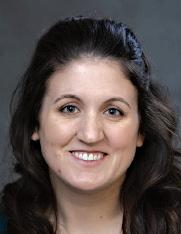

1: Overview of Demographics

26 MichiganPharmacists.org — ON THE COVER —
2023
Pharmacist (n=489) Student Pharmacist (n=50) Pharmacy Technician(n=480) Race/Ethnicity Percentage (%) Percentage (%) Percentage (%) White or Caucasian 83.6 72 79 Black or African American 2.5 0 7 Hispanic or Latino 1.6 5 4 Asian or Asian American 6.5 9 2 American Indian or Alaska Native 0.6 0 1 Prefer Not to Answer 5.2 14 7 Gender Percentage (%) Percentage (%) Percentage (%) Female 56.2 70 82 Male 42.7 23 16 Nonbinary or gender nonconforming 0.1 5 1 Prefer Not to Answer 1 2 1 Age Group Percentage (%) Percentage (%) Percentage (%) 25 and under 1 63 12 26-30 17 23 11 31-40 33 14 31 41-50 18 0 21 51-60 21 0 17 61-65 7 0 7 66 and older 3 0 1
Table
Creighton University School of Pharmacy and Health Professions
Pharm.D. candidate,
Responses by Region

The responses are classified based on various respondent characteristics such as age, gender and geographic region. The state was divided into five regions, as shown in Figure 1. The response rate from each region was relatively equal regarding population density, with Region V having the most responses. The breakdown occurs as follows: Region I (10%), Region II (18%), Region III (14%), Region IV (16%) and Region V (41%). A full breakdown of respondents by region and category is shown in Table 2
Annual Salary
Figure 2 demonstrates the percentage of pharmacist responses by practice site. The most significant proportion of respondents practiced in the health-system setting, followed by chain community pharmacy, then outpatient and independent community pharmacy. A total of 4% identified as independent pharmacy owners. It is important to note that some respondents identified with more than one practice site. In addition, Medicaid has changed the definition of a chain community pharmacy to seven or more pharmacies (rather than four or more pharmacies). The “other” category for pharmacist practice setting included: medication therapy management (MTM) and clinical services vendor, association management, insurance services (including mail order) and drug information publishing company.
2

Pharmacist Responses by Practice Site
Pharmacist Response by Practice Site (n = 489)
n Ambulatory Care
n Chain Community Pharmacy (seven or more stores)
n Consultant Pharmacy
n Clinic
n College of Pharmacy/Academia
n Government
n Health-System/Hospital
n Home Infusion
n Independent Community Pharmacy
n Long-term Care
n Managed Care/Health Plan
n Outpatient Retail Pharmacy
n Pharmaceutical Industry
n Specialty Pharmacy (Nuclear, Compounding, etc.)
n Other
2023 July/Aug./Sept. | Vol. 61, Issue 3 27 — ON THE COVER — Pharmacists Student Pharmacists Pharmacy Technicians Total REGION I 48 1 57 106 REGION II 77 15 92 184 REGION III 61 7 70 138 REGION IV 83 1 81 165 REGION V 220 18 180 418 489 42 480 1,011
Figure 1: Regions Breakdown
Figure
–
27% 1% 3% 2% 2% 34% 1% 8% 4% 4% 7% 2% 5% 5% 6%
Figure 3 demonstrates the percentage of pharmacy technician responses by practice site. Similar to the pharmacist respondents, some identified with more than one practice site. The “other” category for pharmacy technician practice settings included: retail discharge pharmacy settings, insurance services (including mail order), 340B retail pharmacy and patient-centered medical home practice settings. Table 3 lists the mean annual salary of practicing pharmacists by gender and practice site.
Figure 3 – Pharmacy Technician Responses by Practice Site
Pharmacy Technician Results by Practice Site (n = 480)
n Ambulatory Care
n Chain Community Pharmacy (seven or more stores)
n Consultant Pharmacy
n Clinic
n College of Pharmacy/Academia
n Government
n Health-System/Hospital
n Home Infusion
n Independent Community Pharmacy
n Long-term Care
n Managed Care/Health Plan
n Outpatient Retail Pharmacy
n Pharmaceutical Industry
n Specialty Pharmacy (Nuclear, Compounding, etc.)
n Other
Table 3 – Mean Annual Salary of Practicing Pharmacists by Gender and Practice Site
Our calculated average salary for pharmacists in 2023 has stayed nearly the same since 2021, with the overall average wage being approximately $137,853 (as compared to $134,406 in 2021). Table 4 breaks down the average number of pharmacist hours worked per week by practice setting and the average hourly wage for full-time pharmacists by practice setting.
28 MichiganPharmacists.org — ON THE COVER — Average Salary – Full Time Only (31 or more hours a week) Male Female Overall Ambulatory Care 143,075 139,679 140,182 Chain Community Pharmacy (seven or more stores) 126,796 125,902 126,130 Consultant 114,000 112,500 113,571 Clinic 133,905 148,700 145,286 College of Pharmacy/Academia 154,444 139,418 144,426 Government 156,333 150,064 151,774 Health-system/Hospital 146,146 138,381 141,474 Home Infusion 153,824 144,250 147,441 Independent Community Pharmacy 123,908 123,771 123,187 Long-term Care 132,682 166,426 147,161 Managed Care 143,986 164,793 154,390 Outpatient Retail Pharmacy 135,293 124,906 129,627 Pharmaceutical Industry 220,400 228,000 224,546 Specialty Pharmacy (Nuclear, Compounding, etc.) 148,414 137,000 142,359 Overall: 139,744 136,711 137,853
32% 6% 10% 3% 2% 1% 1% 5% 5% 15% 7% 21%
3% 1%
Table 4 – Pharmacist Average Hours and Wage by Practice Setting
There continue to be discrepancies between male and female pharmacists. Still, those gaps are continually closing and many practice sections are seeing closer to equal or reverse salaries for males and females. Table 5 shows the average hourly wages for pharmacists and pharmacy technicians by gender.
5 – Average Hourly Salary by Respondent Type
Table 6 shows average annual salaries and hourly wages for pharmacists and pharmacy technicians broken down by gender. The average hours worked per week for pharmacists and pharmacy technicians were 44 and 40, respectively. When asked about a raise in 2021, 72% of pharmacists and 69 percent of pharmacy technicians reported a pay increase. The average raise was $2.51/hour for pharmacists and $1.76/hour for pharmacy technicians. Twenty-seven percent of pharmacists reported their last raise was about two years before their current raise, while 47% of pharmacy technicians claimed their previous was less than a year prior to their recent raise.

Table 6 – Average Annual Salary by Respondents with Full-Time Status (At Least 31 Hours a Week)
2023 July/Aug./Sept. | Vol. 61, Issue 3 29 — ON THE COVER — Average Hours per Week Average Hourly Wage Ambulatory Care 42 64.19 Chain Community Pharmacy (seven or more stores) 40 60.64 Consultant 41 53.27 Clinic 42 66.52 College of Pharmacy/Academia 47 59.09 Government 40 72.97 Health-system/Hospital 43 63.27 Home Infusion 40 70.89 Independent Community Pharmacy 53 44.70 Long-term Care 47 60.21 Managed Care/Health Plan 42 70.69 Outpatient Retail Pharmacy 42 59.35 Pharmaceutical Industry 45 95.96 Specialty Pharmacy (Nuclear, Compounding, etc.) 44 62.22
Male Female Overall Hourly Wage Hourly Wage Hourly Wage Pharmacist Salary 63 62 62 Pharmacy Technician Salary 21.32 20.71 20.73
Table
Male Female Overall Annual Salary Annual Salary Annual Salary Pharmacist Salary 139,744 136,711 137,853 Pharmacy Technician Salary 45,582 43,165 43,364
"The average hours worked per week for pharmacists and pharmacy technicians were 44 and 40, respectively. When asked about a raise in 2021, 72% of pharmacists and 69 percent of pharmacy technicians reported a pay increase. The average raise was $2.51/hour for pharmacists and $1.76/hour for pharmacy technicians."
Employment Benefits
Table 7 shows employment benefits, including insurance, paid time off and additional fringe benefits. The majority of respondents indicated being offered some form of non-salary compensation. Three percent of pharmacists and 13% of pharmacy technicians were not provided insurance benefits, but nearly 53% of student pharmacist respondents indicated they received no insurance benefits. Student pharmacists were not compensated as much with fringe benefits, which could be due in part to the roles of student pharmacists as well as the part-time nature of their positions in the pharmacy.
Table 6 – Employment Benefits for Pharmacists, Technicians and Students
*Technician certification and licensing fees as a combined benefit
30 MichiganPharmacists.org — ON THE COVER —
Pharmacist (n=99) Student Pharmacist (n=16) Pharmacy Technician(n=12) Insurance Benefits Received Percentage (%) Percentage (%) Percentage (%) Dental Coverage 87 72 14 Disability Insurance 65 47 5 Flexible Benefits Plan 34 26 2 Health Insurance 90 73 16 Life Insurance 76 57 7 Long-Term Care Insurance 31 30 2 No Insurance Benefits 3 6 28 Optical Coverage 79 65 7 Prescription Drug Plan 80 59 12 Professional Liability Insurance 21 7 0 Other 1 3 5 Paid Time Off Benefits Received Percentage (%) Percentage (%) Percentage (%) Bereavement 64 61 5 Continuing Education / Professional Development Days 25 13 0 Holidays 78 68 9 No Paid Time Off Benefits 1 4 21 Paid Maternity Leave 35 33 0 Paid Paternity Leave 23 17 2 Paid Time Off (Employer Doesn't Differentiate Use) 63 50 23 Personal Days 24 24 0 Sabbatical 2 N/A N/A Sick Days 34 38 19 Vacation Days 43 49 7 Other 1 1 2 Additional Benefits Received Percentage (%) Percentage (%) Percentage (%) Allotment for Pharmacy Association Dues / Professional Memberships 17 8 0 Business Mileage Reimbursement 36 19 5 Child Care Services / Assistance 7 3 0 Continuing Education / Professional Development Opportunities 27 21 N/A Discounts on Personal Purchases 33 32 7 Flexible Schedule 28 28 23 Job Sharing 1 1 0 Licensure Fee Reimbursement 14 31 N/A Meals at Work for Reduced Rates 4 3 5 No Additional Benefits Received 5 7 12 Paid Board Certification 9 45* N/A Professional Attire 9 11 2 Profit-Sharing Program 7 9 0 Retirement / 401(K) 82 64 16 Stock Purchase Options 16 16 0 Tuition Assistance for Advanced Degrees 20 14 N/A Use of Auto / Automobile Allowance 4 1 0 Wellness Benefits 26 17 7 Other 1 1 0
Student Pharmacist Observations
While the response of student pharmacists was limited in this survey, the information these participants provided sheds light on how the profession may shift over the coming years as students begin to graduate. Figure 4 outlines the breakdown of respondents based on their years in pharmacy school. A plurality of those who participated were in their P2 year in 2023.
Figure 4 – Student Pharmacist Respondents by Year Student Pharmacist Respondents by Year (n = 48)
Of the students that responded, 88% indicated they plan on practicing in the state of Michigan upon graduation, with 53% stating they are also planning on pursuing a residency after graduation. Because many students can earn certifications to provide immunizations and point-of-care testing while in pharmacy school, 95% of respondents indicated they are certified to provide immunizations. Still, only 37% are certified to administer point-of-care tests. In addition, 37% stated that they were certified to provide MTM.
The average number of hours a student pharmacist worked in 2023 was 17 hours a week, but respondent submissions ranged from zero hours a week to 40. The average hourly wage for a student pharmacist was $18.83, but wages also ranged from $15 to $60 hourly. Because of the varying schedules of pharmacy students, their diverse backgrounds and previous education, how frequently they work and their role in the pharmacy, hourly wages may vary widely. Many students also received scholarships to fund their education, with 51% of student respondents reporting they received a scholarship. These awards ranged between $800 and $12,000.
Additional Observations and Conclusions
Additional Pharmacist Data: 118 out of 470 respondents reported that they have completed a post-graduate residency or fellowship. Twenty-three percent completed a post-graduate year 1 (PGY1) residency, 8% completed a PGY2 residency and 2% completed a fellowship. Tables 8 and 9 provide additional detail regarding respondent pharmacist credentials. Other credentials include bachelor’s degrees, medical science liaison, masters in health administration and certified specialty pharmacy. Board certifications are increasing year-over-year and expanding into other health care and pharmacy practice facets. Of 450 pharmacist respondents, 121 indicated that they received board certification. See Table 9 for a breakdown of board certifications. In addition to the credentials, 78% indicated they are certified to provide immunizations, 42% were certified to provide point-of-care testing and 48% are certified to provide MTM services.
2023 July/Aug./Sept. | Vol. 61, Issue 3 31
n P1 n P2 n P3 n P4 CREDENTIAL PERCENTAGE (%) PHARM.D. 72 B.S. PHARM 31 BCACP 1 CDE 1 J.D. 1 M.A. 0 MBA 5 M.P.H. 1 M.S. 4 PH.D. 1 Other 3
BOARD SPECIALTIES (n=20) CREDENTIAL PERCENTAGE (%) Ambulatory Care Pharmacy 17 Cardiology Pharmacy 3 Compounded Sterile Preparations Pharmacy 2 Critical Care Pharmacy 7 Geriatric Pharmacy 11 Infection Disease Pharmacy 4 Nuclear Pharmacy 2 Nutrition Support Pharmacy 2 Oncology Pharmacy 7 Pediatric Pharmacy 3 Pharmacotherapy 39 Psychiatric Pharmacy 2 Solid Organ Transplantation Pharmacy 0
Table 7 – Credentials of Respondent Pharmacists (n=100)
— ON THE COVER — 30% 16% 26% 28%
Table 8: Credentials of Respondent Pharmacists
Additional Observations and Conclusions (continued)
Additional Pharmacy Technician Data: Thirty percent of the respondents hold an associate's degree, while 20% hold a bachelor’s degree. Of the 480 respondents, 78% were Pharmacy Technician Certification Board (PTCB)-certified pharmacy technicians, while only 5% identified as a PTCB-advanced certified pharmacy technician (CPhT-Adv). Ten percent of respondents also identified as a Compound Sterile Preparation Technician (CSPT)-certified pharmacy technician. Forty-nine percent of respondents reported that their employer pays a higher hourly rate to certified pharmacy technicians. The average increase in hourly wage was reported to be $1.76.
Student Loan Debt: Among the respondents, 98% indicated they graduated with debt. Of those, 18% owed more than $150,000, while 23% were somewhere between $100,001 and $150,000, with 20% of these respondents indicating they had between $5,000 and $50,000 of debt upon graduation. The amount of debt upon graduation is listed in Figure 5. Of those who indicated they graduated with debt, 35% noted that they still pay off student loan debt. Figure 6 highlights the amount of debt currently held by respondents based on age. Those 65 years of age or older reported no remaining student loan debt.
Figure 5 – Student Loan Debt for Pharmacists After Graduation
Student Loan Debt for Pharmacists After Graduation
n Less than $5,000
n $5,001-$25,000
n $25,001-$50,000
n $50,001-$75,000
n $75,001-$100,000
n $100,001-$125,000
n $125,001-$150,000
n More than $150,000
Figure 6 – Remaining Debt for Pharmacists with Outstanding Student Debt
Remaining Debt for Pharmacists by Age
n 51-60
Purchasing Budget: 165 pharmacist respondents reported their average annual purchasing budget. Table 10 outlines the purchasing budget results. It is important to note that the data written does not differentiate between different practice settings.
Table 10: Pharmacy Purchasing Budget (n=162)
Relevant 2021 and 2023 Comparisons
The 2023 economic summary included around 600 more participants than the 2021 survey, which may have affected observed differences between the results. The average salaries for pharmacists were approximately similar for the 2021 and 2023 data, with the pay gap between female and male pharmacists narrowing. Like pharmacists’ salaries, pharmacy technician salaries remained virtually unchanged in 2023.
Thank you to everyone who participated in this year’s economic survey. Without your participation, this study would not be possible. Thank you for your continued involvement in MPA and support in future endeavors.
32 MichiganPharmacists.org — ON THE COVER —
12.09% 24.74% 11.65% 17.38% 11.24% 8.79% 7.16% 6.95%
under
n 25 and
n 26-30
n 31-40
n 41-50
35% 14.5% 5% 42.5% 1% 2%
DOLLAR AMOUNT PERCENTAGE (%) < $2 million 32.71 > $2-4 million 12.96 > $4-6 million 8.02 > $6-8 million 4.94 > $8-10 million 9.26 > $10-50 million 12.34 $51-100 million 7.43 $101-250 million 4.94 $251-500 million 1.23 >$500 million 6.17
GOING MOBILE TO BEAT CARDIOVASCULAR DISEASE
Advancing the Reach of Pharmacists Beyond the Checkout Counter
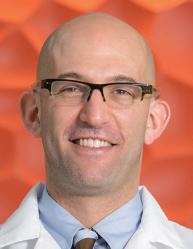
Chronic hypertension, a leading risk factor for cardiovascular disease and premature death, is likely to increase in prevalence due to updates in guidelines. The newest American College of Cardiology (ACC) and American Heart Association (AHA) define hypertension as blood pressure greater than 130/80 millimeters of mercury (mmHg), lowered from the formerly accepted blood pressure of greater than 140/90 mmHg. As a result of these changes, nearly half the U.S. population will be diagnosed with hypertension. To prevent a public health crisis, achieving blood pressure control at the population level is imperative.
At Wayne State University, a novel team-based care strategy has been developed in Detroit to reduce the rate of uncontrolled hypertension and impede the development of cardiovascular disease (CVD) –especially in underserved minority communities – with pharmacists at the forefront of the battle. Driven by the Wayne Mobile Health Unit (MHU) program, this strategy tackles the issue head-on through the use of barrierfree, place-based care delivery where pharmacists are positioned in roles of leadership to assist in controlling patients’ hypertension through medication and counseling therapies with the aid of collaboration agreements.
Program Background
The Wayne MHU program began in the early days of the COVID-19 pandemic as a location-based strategy to improve access to COVID-related health care services (such as testing and vaccinations) for disproportionally affected minority populations in socially vulnerable communities across Michigan.

assessments through community health workers (CHW) who provide linkage to resources. Pharmacists have been included among the Wayne MHU team since its inception, providing services ranging from administration of vaccines to CHW oversight and implementation of treatment protocols under collaborative practice agreements. A key component of the Wayne MHU program is the use of population level data from Wayne State University’s PHOENIX (Population Health OutcomEs INformatIon Exchange) program to direct deployment of vehicles to areas with the greatest burden of social vulnerability and cardiometabolic risk, especially uncontrolled hypertension.
BY SYLVIA WASSON, Pharm.D., pharmacist and community health worker manager, Wayne Mobile Health Unit Program; PIA-ALLISON ROA, Pharm.D., clinical pharmacy specialist, ambulatory care, Wayne Mobile Health Unit Program; and PHILLIP LEVY, MD, MPH, FACEP, FAHA, FACC, professor of emergency medicine and physiology/associate vice president for translational Science at Wayne State University, director of Wayne Mobile Health Unit Program
The MHU program soon transitioned from pandemic response to portable population health, adding preventative services such as screening for hypertension, hyperlipidemia, kidney disease and diabetes while also offering social determinant needs
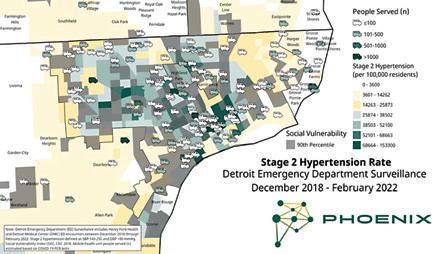
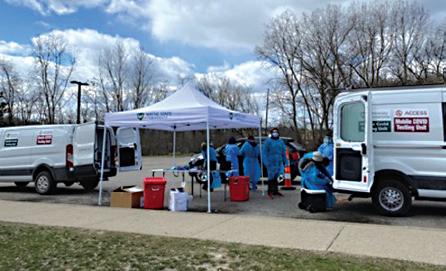
This model represents the interprofessional future of health care enhancing accessibility and equity and reshapes the way patients and providers view approaches to delivering health care, with an eye towards improving population health outcomes. Armed now with a fleet of eight fully-upfitted vehicles and a staff of more than 80 people, the Wayne MHU program has continued to evolve, bringing ever expanding placebased care to communities across Michigan. Currently, on average there are six to eight MHU events per day that reach hundreds of people in the community each week, with ongoing collection of a wide range of data to continue quality improvement efforts.

2023 July/Aug./Sept. | Vol. 61, Issue 3 33
— MHU FEATURE —
Wayne Mobile Health (MHU) unit during the COVID-19 pandemic efforts.
Map showing vehicles deployed overlaid with social vulnerability and blood pressure data.
There are several large ongoing research studies, conducted in partnership with Wayne State University, to ensure continuous quality improvement of current standard operating procedures, add to the greater scientific literature surrounding cardiovascular preventative health and enable the study of novel care models that emphasize the role of CHWs and pharmacists. Among these is ACHIEVE-GREATER (Addressing Cardiometabolic Health Inequities by Early PreVEntion in the GREAT LakEs Region, one of 11 centers that are part of the National Institute of Minority Health and Health Disparities Health Equity Action Network and LEAP-HTN (Linkage, Empowerment and Access to Prevent Hypertension). LEAP-HTN is part of the American Heart Associationfunded RESTORE (addREssing Social determinants TO pRevent hypErtension) Health Equity Research Network. The overarching goal of this research is to reduce cardiometabolic health disparities by addressing social determinants and optimizing pharmaceutical management through a CHW and pharmacist-delivered program of care known as PAL2 which is a “pragmatic, personalized, adaptable approach to lifestyle and life circumstance” intervention. Paired with prompt pharmacist-led remote medication management of blood pressure and protocol-based initiation of other guideline-directed therapy – such as statin
use and expanded use of SGLT2-inhibitors in indicated patients — this approach will be tested compared to usual care tracking a range of cardiometabolic and processoriented outcomes.
Overview of Pharmacist Involvement with MHUs
With the large proportion of MHU activities focusing on barrier-free, place-based preventative health services, pharmacists are well-equipped and well-positioned to leverage their trust within the community and operate at the top of their license by leading the management of chronic disease states, participate in vaccine administration and provide valuable medication knowledge to the team and community. The MHU currently offers remote care-delivery pathways led by a pharmacist via collaborative practice agreement for patients who screen positive for hypertension and tobacco smoking. In the case of hypertension, this consists of remote patient monitoring using cellular-enabled BP cuffs and scales that report directly to the patient’s electronic medical record. Guidelinedirected pharmacy medication protocols include blood pressure medications as well as other cardiometabolic prevention therapy, such as statins for those indicated and SGLT2 inhibitors for participants with diabetes or chronic kidney disease.
Inclusion of statins and SGLT2 inhibitors enables more equitable use of guidelinerecommended prevention therapy. For those who smoke, cessation services including remote patient counseling, initiation/ management of nicotine replacement therapy and linkage to state-based smoking cessation resources (such as Quitline). To amplify and enhance the importance of social determinants of health and need for social support in addition to guidelinedirected medication therapy, pharmacists also works closely with CHWs. The care-delivery pathways provide a quick follow-up on the screening results from the MHU through personalized and adaptable medication therapy plans, individualized medication counseling and consistent and available communication with the pharmacist and CHW. In addition to the remote care-delivery pathways, pharmacists are available onsite with the MHU to provide medication counseling services. These processes are continuously being audited and are currently part of grant-funded research to enhance quality improvement.
In addition to the clinical work pharmacists provide for the MHU, pharmacists are involved with fostering leadership and collaboration with the CHW. Working with MHUs allows the pharmacist to redefine the role of a community pharmacist and enter the communities where people live, work and worship to provide health care where it might otherwise be elusive — removing barriers to care. A critical part of the care-delivery pathway is the role that the CHWs play as the liaison to services provided by the Wayne MHU program. Boosting and magnifying the CHW interactions with the patients enhances the patient-centered experience. CHWs, trained and certified through the Michigan Community Health Workers Alliance (MiCHWA) program, ensure that the patients are at the epicenter of daily tasks. Discovering negative social determinants of health and providing resources are essential CHW goals when advocating for the underserved. CHWs are able to easily gain the trust of those served by the MHUs because they often live in the same communities as the patients they serve.
As a result, they are easily able to navigate the cultural norms associated within these areas. Another reason CHWs are trusted is that they are able to provide non-judgmental assistance and resources, with documentation oversight, to those in need. This includes assistance to the unhoused and those who have food

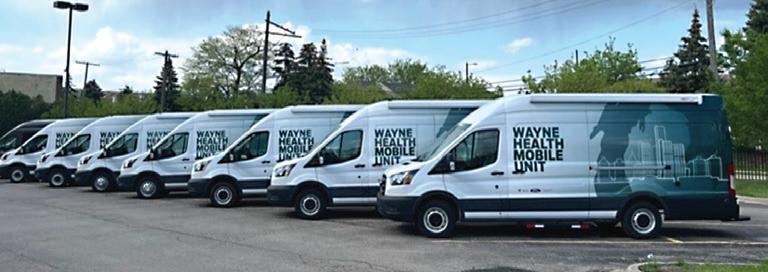
34 MichiganPharmacists.org
— MHU FEATURE —
Current Wayne Mobile Health Unit (MHU) fleet
Current site with working staff
insecurities or transportation needs, removing critical barriers to care. Through such actions, the MHU program is able to make community engagement a foundation of its work, building and maintaining trust within the locations visited on a daily basis. With critical patient reviews to troubleshoot, patients often feel that their concerns are addressed through the resources provided by CHWs when help may have been previously elusive. By addressing these upstream barriers, it may be possible to abate the downstream health consequences. Pharmacist-led support of ongoing training for CHWs for maintenance of certifications and upskilling increases the consistency and scope of support provided by CHWs, enhancing the magnitude of potential impact.
Future Directions
The Wayne MHU program is pushing the boundaries of what the traditional views of the pharmacy career paths might look like. Through the collaboration of research, management of CHWs and development of the pharmacist-assisted mobile units, the role of the pharmacist is unlimited. The MHU program is actively exploring a number of community pharmacy partnerships to help grow the efficiency and effectiveness of hypertension and other cardiometabolic risk reduction interventions and enable scaling to additional chronic conditions.
Building alliances with pharmacies that will accommodate the MHU program is only the short-term goal of providing for the patients. The long-term goals include establishing purpose-driven pharmacies with a simple formulary that will supply the medications that facilitate the objective of prevention of chronic health conditions with an emphasis on hypertension, hyperlipidemia and diabetes. By addressing these cardiometabolic risk factors, as well as smoking, the pharmacist’s role in the MHU can have a positive impact on the quality of life and life expectancy of the patients served.
While the MHU program has been funded to date by a combination of philanthropy, grants and fee-for-service activities, achieving sustainability requires working closely with third-party payers, including Medicaid managed-care organizations such as Molina Healthcare, bringing services to community members who have not engaged in preventative screening services. By partnering with Molina on a novel payment model that includes bundled screening fees and future plans for per member-per-month
pricing, the Wayne MHU program is paving the way towards sustainability. Furthering this model, the Wayne MHU program has also collaborated with local businesses such as Detroit Chassis and Shinola to provide preventative health screenings on site for their employees. This approach provides the added benefit of reducing health care costs by preventing downstream consequences of conditions like hypertension, reducing the risk of chronic health conditions that can lead to expensive hospital stays. This collaboration shows the eagerness of third-party payers as well as business employers to focus on preventive care through the MHU and pharmacist-led initiatives resulting in positive health outcomes.
Pharmacist Spotlight
Pia-Allison Roa joined the MHU team in September 2022 as part of the ACHIEVEGREATER and LEAP-HTN research programs. After her pharmacy training at Wayne State University’s Eugene Applebaum College of Pharmacy and Health Sciences, she completed a PGY1 residency at Beaumont Dearborn and a PGY2 residency in ambulatory care at the University of Michigan, all while living in Detroit. Roa fostered an interest in the management of chronic disease states and a passion for health equity and development of innovative programs and practices.
In addition to her remote blood pressure management services, Roa participates in development of other pharmacist-led care pathways and creation of protocols and standard operating procedures. She leads the monthly internal ACHIEVE-GREATER Hypertension Research Educational Meetings and builds an environment for future involvement of pharmacy students within the MHU. She has also led the development of the program’s smoking cessation care-delivery pathway, further expanding the pharmacist’s reach in the MHU and addressing the disproportionally high percentage of tobacco smokers in the community. Roa also works closely with the research and administrative team in the assessment and improvement of the Wayne MHU programs and grant-funded research.
Dr. Sylvia Wasson joined the MHU team in May 2023 when there were additional avenues of care that could be explored to decrease the health disparity gap in the underserved communities of the metropolitan Detroit area. While training for her pharmacy degree at Ferris State University’s College of Pharmacy,
she completed her fourth-year rotations in the clinical setting at Bronson Methodist Hospital. She later went on to work for Rite Aid Pharmacy during the height of the COVID-19 pandemic, where the ability to gain the trust of the patients to whom medication and vaccines were dispensed was essential to calm their fears and anxiety. Raised in Detroit, her devotion and desire to assist the patients where her roots lie brings her full circle. In addition to managing the MHU program CHWs, Wasson is leading development of future MHU -based pharmacy services. She is also encouraging the placement of pharmacy interns in order to expand their concepts of potential career pathways outside of the traditional “walls” of a pharmacy. While collaborating with Roa’s smoking cessation initiative, the idea is to continue to develop the breadth of services that bring health care to the community.
Conclusion
The Wayne MHU program has challenged and pushed the edge of what accessible and equitable health care can look like. By incorporating pharmacists who are practicing at the top of their licenses and at the forefront of barrier-free preventative health services, the Wayne MHU program is changing caredelivery and driving new models of practice. In such models, pharmacists are actively participating in direct place-based patient care on site through medication counseling and vaccine administration; remote medication management via collaborative practice agreement for patients with hypertension or those who smoke tobacco; development of new care pathways and protocols for medication management of other chronic disease states; fostering leadership and collaboration with CHWs; and development of partnerships with local community pharmacies to serve the MHU.
Such a vision represents the interprofessional future of population health – a future where pharmacists are leading players helping to ensure that everyone receives high-quality care in an equitable and just manner.
2023 July/Aug./Sept. | Vol. 61, Issue 3 35 — MHU FEATURE —
LOCAL ASSOCIATION SPOTLIGHT: GENESEE COUNTY PHARMACISTS ASSOCIATION
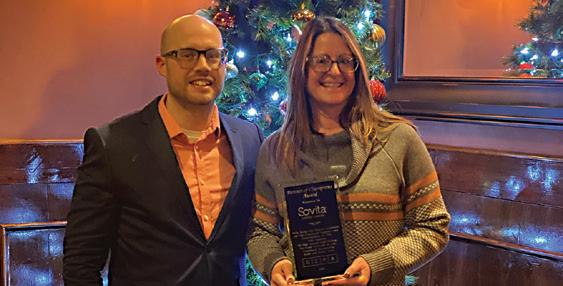 BY THOMAS BREEDEN, chairman, GCPA
BY THOMAS BREEDEN, chairman, GCPA
Number of years as MPA Member and number of years with local: Including as a student, I have been an MPA member for nine years and have been affiliated with GCPA since 2015.
When was your local formed: The GCPA was reactivated in 2011.
How did you learn about your local association?: GCPA “adopted” me as part of the adopt-a-student dinner at the MPA Annual Convention & Exposition (ACE). From there, I was able to learn about GCPA from current MPA Executive Board Chairman Mike Crowe over dinner.
Where and when does your Local hold meetings?: Our executive board meets roughly once per quarter, usually at a local restaurant. Belva in Davison has been our go-to recently. Members are always welcome to attend executive board meetings if they wish.


Membership meetings are held throughout the year. These are usually held around a social event such as our annual summer barbecue, which historically is held at Abernathy Park in Davison, or our holiday party at Brick Street in Grand Blanc around Christmas. We also aim to have one additional social event (axe throwing, bowling, trivia night, etc.) during the third quarter.
Why do you feel it is valuable to support and join a local association? How has it benefited you?
1) To support the good work we do in our community (local drug take-back days, education, supporting local free medical clinics financially and as volunteers).

2) To support us in supporting students (annual scholarships given to pharmacy and technician students).
3) Networking: As a pharmacy student the connections I made through GCPA were very important as I pursued employment. They would again be significant should I ever choose or need to transition jobs.
4) It is often easier to make a change at a local level and have your local advocate to MPA for larger scale change.
5) It's fun to get together with other pharmacists to socialize and discuss pharmacy successes and challenges.
36 MichiganPharmacists.org — LADC FEATURE —
The GCPA Executive Board meets at the annual holiday party. GCPA members attend an “axe throwing social.”
Members of the GCPA help out during a drug take back event earlier this year. GCPA Chairman Thomas Breeden, left, poses with Julie from Sovita, who was awarded the association’s “Partner of Champions” award for her support of the annual GCPA golf outing.
Do you have a favorite event or memory related to your local?: Hands down my favorite part every year as a GCPA executive board member is getting to crunch the numbers to see exactly how much we can donate to the Genesee County Free Medical Clinic after our annual golf outing fundraiser. In the last two years we have donated more than $5,000! As someone who has volunteered as a pharmacist at the clinic, although not as much as many other members, I’ve seen firsthand the great work that is being done there. All of these
patients are uninsured or underinsured and would not have access to medical, dental, or pharmaceutical care without the clinic.
Please list any upcoming events (continuing education, membership recruitment or social events):
Aug. 20: Golf outing to benefit GPCA and the Genesee County Free Medical Clinic
Mid-September: Executive board meeting, date pending.
Who is a good contact at your local for further information and questions?: Thomas Breeden (thomas.breeden@ ascension.org or (810) 931-1761). My leadership role ends in December and Max Charron (maxcharron1@gmail.com) will be taking over as acting chairman and Cindy Gillespie (CindyGillespie76@gmail.com) will be the next president.
LOCAL MEETINGS AND EVENTS
Kent County Pharmacists Association
No events scheduled
Contact: kcpapharmacists@gmail.com
Genesee County Pharmacists Association
Aug. 20: Annual golf outing to benefit the Genesee County Free Medical Clinic
Contact: Thomas.breeden@ascension.org
Capital Area Pharmacists Association
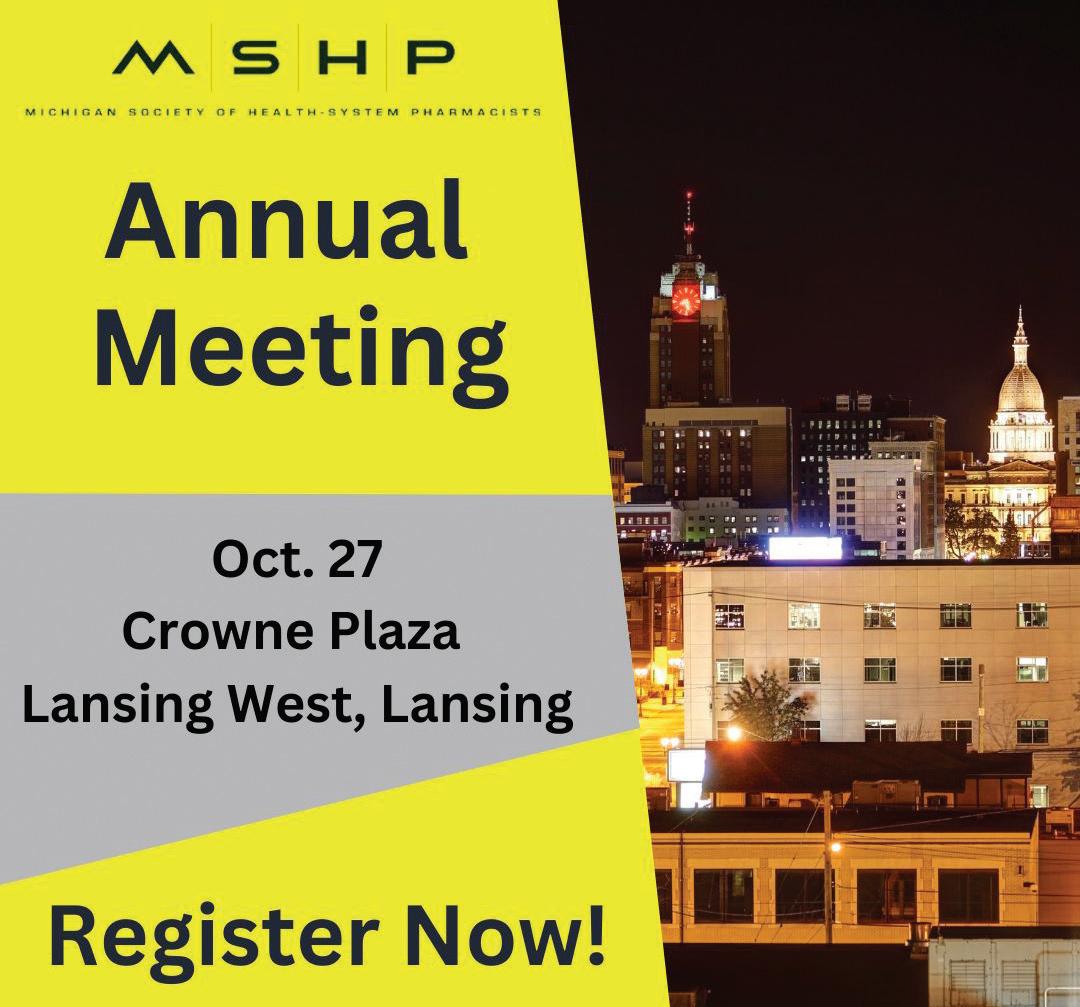
Aug. 22: Eaglemonk Brewery Social Event, 6-9 p.m.
Sept. 21: Executive Board Meeting, 6 p.m. (via Zoom)
Contact: capapharm@gmail.com
MPA Upper Peninsula Division
Oct. 7-8: MPA Upper Peninsula Fall Conference, Northern Center at Northern Michigan University
2023 July/Aug./Sept. | Vol. 61, Issue 3 37
— LADC FEATURE —
BY RON DEVERS, CIC, CPIA, director of operations, PSI Insurance Agency

OF SERVICE! 30 Years
A lot can happen in 30 years. It seems so long ago. Remember when:
• North Carolina defeated Michigan in the NCAA Tournament finals?

• Dallas defeated Buffalo in the 1993 Super Bowl?

• "Unforgiven" won the Academy Award for Best Picture?

• Ruth Bader Ginsburg was appointed to the Supreme Court?

And the list goes on. One event that has affected many in Michigan was the formation of PSI Insurance Agency, a wholly-owned subsidiary of the Michigan Pharmacists Association (MPA).
The Pharmacy Services Inc. (PSI) board thought that an insurance agency would be a great member benefit. The rest, as they say is history. We began as Pharmacy Services Insurance Agency, and over the years to better identify with a broader base, became PSI Insurance Agency LLC. While pharmacies and pharmacy professionals are still our niche, we happily write
insurance for a wide range of individuals and businesses across the state.
Our group of companies has grown from the two original to 13 different carriers we represent. In 2021, we purchased Mid-Michigan Insurance Group, and added Scott Harris and Dave Spoelman to our roster of insurance professionals. Ellen Rodriguez has served many of you for over 10 years and we want to continue with these relationships. We’ve had ups, downs, successes and failures, but we truly want to be your insurance source.
So, when your auto, home, or business insurance policies are renewed, give us a call to meet our friendly staff and see how we can help you. We can also assist with your various life and disability needs as well. We are here to serve.
If you’ve been insured by us, as many of you have –some for a short time and others for many years – we want to say a huge thank you! Thank you for your trust in us to handle your insurance needs. Let’s do this again in another 30 years.
38 MichiganPharmacists.org — COVER YOUR ASSETS —
INVOICE AUDITS ARE ON THE RISE –ARE YOU PREPARED FOR SUCCESS?
Most pharmacies have grown accustomed to desk audits and providing copies of prescriptions, signature logs and even copay collection records to PBMs upon request. Additionally, many pharmacies can recount their most recent experience with an onsite auditor visiting their pharmacy and the numerous questions related to operations, policies and procedures, and credentialing. However, not as many pharmacies have experienced an invoice audit – the stakes are higher and honest mistakes can lead to very expensive lessons in the process.
PAAS National® analysts have helped our members navigate countless invoice audits. Our analyst team is here to assist you through the audit process from start to finish and that includes getting things done correctly long before the audit ever comes your way. Follow the tips below to have the most success.
BY TRENTON THIEDE, Pharm.D., MBA, president, PAAS National®, expert third-party audit assistance and FWA/HIPAA compliance
PAAS Tips:
• Carefully evaluate your wholesalers/suppliers to ensure they are legitimate
o NABP Accredited Drug Distributors can be found here1
o Wholesalers licensed in your state can be found here2
o Remember that OTC diabetic test strip manufacturers only sell their products to “authorized distributors”.
n Abbott https://www.diabetescare.abbott/support/distributors.html
n Ascensia https://www.ascensiadiabetes.com/ (click on “distributors” at the bottom of the page)
n LifeScan www.genuineonetouch.com
n Roche https://rxvp.accu-chek.com/welcome/adr_list
n Trividia HealthTM https://www.trividiahealth.com/where-to-buy/
• Limit purchases from other pharmacies to the minimum necessary
o Drug Supply Chain Security Act (DSCSA) pedigree information is required unless purchase is (1) intra-company or (2) to fulfill a specific patient need
o Full transaction details are required for audit purposes. Documentation should include:
n Pharmacy name, address, and NCPDP number transferring from
n Drug name, quantity, lot number, expiration date, and NDC number should all be included on the transfer invoice
n Date of transfer and date of receipt of drug
n Reason for transfer (e.g., complete Rx #1234)
n Method or proof of payment (check # or credit card receipt)
• Ensure pharmacy staff are billing the correct quantity based on NCPDP billing standards – when in doubt, call PAAS for help
• Every claim billed must have NDCs that match the physical product being dispensed
o No exceptions, all 11 digits matter
o Includes all compound ingredients
o PAAS recommends using barcode scanner to confirm NDC accuracy in pharmacy workflow

• Confirm the pharmacy is appropriately reversing claims that are not dispensed
References:
1. https://nabp.pharmacy/programs/accreditations-inspections/drug-distributor/accredited-drug-distributors/
2. https://www.fda.gov/drugs/drug-supply-chain-integrity/verify-wholesale-drug-distributor-licenses
2023 July/Aug./Sept. | Vol. 61, Issue 3 39
— PAAS NATIONAL —
(608)
LLC. Unauthorized use or distribution prohibited. All use subject to terms
PAAS National® is committed to serving community pharmacies and helping keep hard-earned money where it belongs. Contact PAAS today at
873-1342 or info@paasnational.com to see why PAAS Audit Assistance membership might be right for you. Copyright © 2023 PAAS National,
at https://paasnational.com/terms-of-use/
FEEL THE BURN:
What is Burnout and How to Combat it; an Update on Burnout for Pharmacy Personnel
BY TRAVIS MACFARLANE, Pharm.D., Meijer/Pfizer/Ferris PGY-1 Community Pharmacy Resident
Introduction
Target Audience:
This continuing education activity was designed for pharmacy technicians, pharmacists and pharmacy students.
Disclosure Statement:
The author has indicated that he does not have any conflicts of interest, nor does he have financial relationships with a commercial interest related to this activity.
Pharmacist Objectives:
At the end of this activity, participants should be able to:
1. List the common signs of burnout
2. Define different strategies to prevent burnout
3. Demonstrate when professional help is needed to treat burnout
4. Identify organizational opportunities to improve employee burnout rate
A patient presents to the pharmacy, seeming out of sorts and distressed from a medication error that caused them to end up in the hospital. Under normal circumstances, someone in the pharmacy may notice the distress and ask the patient if everything is okay. Yet, today the personnel have lost interest in their jobs and treating everyone like they are a number. All the personnel want to do is to just make a paycheck and clock out at their time to leave as this is “not their problem.” Their drive to care for patients has left them devoid of their passion to help patients. When addressing the patient’s concern over the error, the personnel treat the issue like it is no big deal and just want the patient to leave. If this sounds familiar, that is because some of the personnel working that day may be experiencing burnout. It is estimated that anywhere from 25% to 70% of pharmacy personnel are experiencing burnout and the incidence rate has been increasing over the last few years.1,2,3 As this has progressed, the phenomenon has become talked about more in the media and in medical literature. Society has begun to take notice of both the short- and long-term ill effects such as medical errors. These effects have gotten the attention of ICD-11 (QD85) and they introduced the current working medical definition as a “syndrome conceptualized as resulting from chronic workplace stress that has not been successfully managed.” It is characterized by three dimensions: feelings of energy depletion or exhaustion, increased mental distance from one’s job with feelings of negativism or cynicism related to work, and reduced professional efficacy. With the new research into the consequences of burnout in the medical community, studies have begun to show that it can cause negative health outcomes on the person experiencing it and the patients that they are taking care of.4 This article will provide pharmacy personnel with information about and ideas on how to manage burnout.
Please visit https://www.lecturepanda.com/v2/announcement/ag1zfnJ4Y2V0cmFja2VychMLEgZDRVVzZXIYgICAsLaLigoM/ ag1zfnJ4Y2V0cmFja2VycicLEgZDRVVzZXIYgICAsLaLigoMCxIHTGVjdHVyZRiAgODtmeHKCgw to read the rest of this article.

40 MichiganPharmacists.org — FREE HOMESTUDY —



























































 BY MICHELLE DEHOORNE, BSPharm, Pharm.D., MSHP president
BY MICHELLE DEHOORNE, BSPharm, Pharm.D., MSHP president

















 BY THOMAS BREEDEN, chairman, GCPA
BY THOMAS BREEDEN, chairman, GCPA










